I really felt like I hit a wall yesterday and was so super tired when I went to bet last night. Even though I slept well, I still felt exhausted when I woke up at 6:30am with Sara. Thankfully I caught my second wind later in the morning. Breakfast was a bit different since today is Sabbath. Very little hot food, as it had been prepared earlier. I found a wonderful cheese danish and ended up eating three of them. I also had three cups of coffee to try and give me a boost of energy.

We boarded the bus around 8:15am and headed to the Mount of Olives overlooking the Old City of Jerusalem. I had brought my travel tripod, and we quickly got the group together for a picture in front of the city. It was stressful trying to get it setup and use the remote trigger on my phone with so much activity going on around us. However, I’m really pleased with how it turned out. This is absolutely one of my favorite photos from the trip so far. This was when I got my second wind.
Mount of Olives

After our group picture, Ami took us down to a lower area on the for us to talk. The Mount of Olives is a ridge running along the east side of Jerusalem, separated from the city walls by a ravine and the Kidron Valley. The Kidron brook and valley are on the eastern side of Jerusalem. This location is mentioned numerous times in scripture as a boundary (2 Sam 15:23, 1 Kgs 2:37, etc.).
Today the Mount of Olives is dotted with many churches, including the Church of All Nations, the Church of Mary Magdalene, and the Church of Dominus Flevit (we saw all these today).
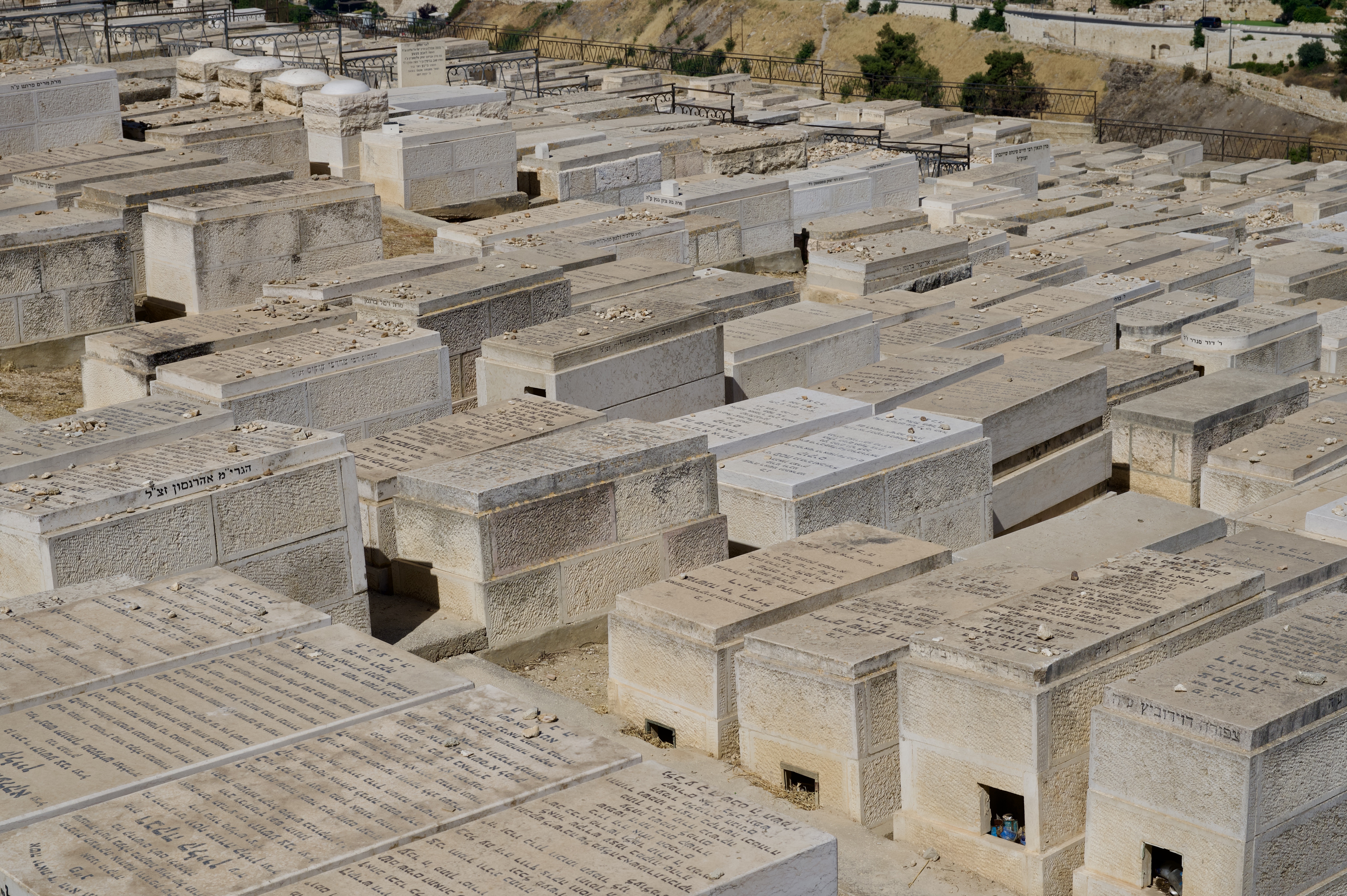
It is also covered in Jewish tombs. Ami told us that this is the largest Jewish cemetery in the world. All the graves are above ground, and people leave small stones on them to simply say “I was here.” In the time of Jesus, this would have simply been a mountain filled with olive trees.
The Mount of Olives is very important in scripture, and was the site of many events:
*When David’s son Absalom took control of Jerusalem, David and his loyal followers fled the city via an eastern route and David went up the Mount of Olives weeping (2 Samuel 15:30).
*King Solomon used the Mount of Olives for idol worship (1 Kings 11:7).
*In one of Ezekiel’s visions, the prophet sees the glory of the Lord depart from Jerusalem and come to rest above the Mount of Olives (Ezekiel 11:23).
*Jesus made many visits to the Mount of Olives (Luke 21:37). It was His “custom” to go there when in the vicinity of Jerusalem (Luke 22:39).
*Every time Jesus visited Lazarus and Mary and Martha, He was on the Mount of Olives, for their village of Bethany was situated on the eastern slope.
Jesus visits the Mount of Olives three times in the last week of life, and each time something of significance happened.
(1) The first visit during His final week was during the triumphal entry:
*The donkey Jesus rode that day was found in the area of Bethany and Bethpage, on the east side of the Mount of Olives (Matthew 21:1–11, Mark 11:1–11, Luke 19:28–44).
*Then, “when he came near the place where the road goes down the Mount of Olives, the whole crowd of disciples began joyfully to praise God in loud voices for all the miracles they had seen” (Luke 19:37).
*While still on the Mount of Olives, Jesus looked at the vista in front of Him, wept over the city, and pronounced a judgment against it (Luke 19:41–44).
(2) Jesus’ second visit that week was to deliver what has come to be known as the Olivet Discourse, recorded in Matt 24:1 —25:46. Parallel passages are found in Mark 13:1–37 and Luke 21:5–36. The content of the Olivet Discourse is Jesus’ response to His disciples’ question “When will these things be, and what will be the sign of your coming and of the close of the age?”
(3) Jesus’ third visit that week was on the night He was betrayed. That evening began with the Last Supper in Jerusalem and ended in the Garden of Gethsemane on the Mount of Olives (Matt 26:30–56; Mark 14:26–50; Luke 22:39-53).
*He took His disciples to the Garden of Gethsemane (literally, “Garden of the Olive-press”) located on the western slope of the Mount of Olives.
*There Jesus prayed in agony as He contemplated the day to come.
*After Jesus prayed, Judas Iscariot arrived with a multitude to betray and arrest Jesus.
After His resurrection, Jesus once again stood on the Mount of Olives where He ascended into Heaven (Luke 24:50–52; Acts 1:11-12). Acts 1:12 specifies that “the vicinity of Bethany” was indeed the Mount of Olives.
According to the prophet Zechariah, Jesus will return not only in the same way, but to the same place. In a prophecy related to the end times, Zechariah declares, “On that day his feet will stand on the Mount of Olives, east of Jerusalem, and the Mount of Olives will be split in two from east to west, forming a great valley, with half of the mountain moving north and half moving south” (Zechariah 14:4).
Ami talked to us about the first temple period and then the second temple period built by Herod the Great who died in 4 AD. He also talked to us about the destruction of temple in AD 70, and all the groups that have rebuilt parts of the city over the centuries since that time.

The Muslims took over the city in the 7th century. Mohammad made a special trip from Mecca to the Temple Mount, and according to Islam, this is where he ascended into heaven. The Muslims built a shrine to commemorate this event, which is called “Dome of the Rock.” It was initially completed in 691–92 AD. It covers the “Foundation Stone” that Muslims believe to be the site where Abraham attempted to sacrifice Ishmael on Mt. Moriah. This is the most striking place in the skyline of Jerusalem.

Later the Muslims built the Al Aqsa Mosque also on the Temple Mount.
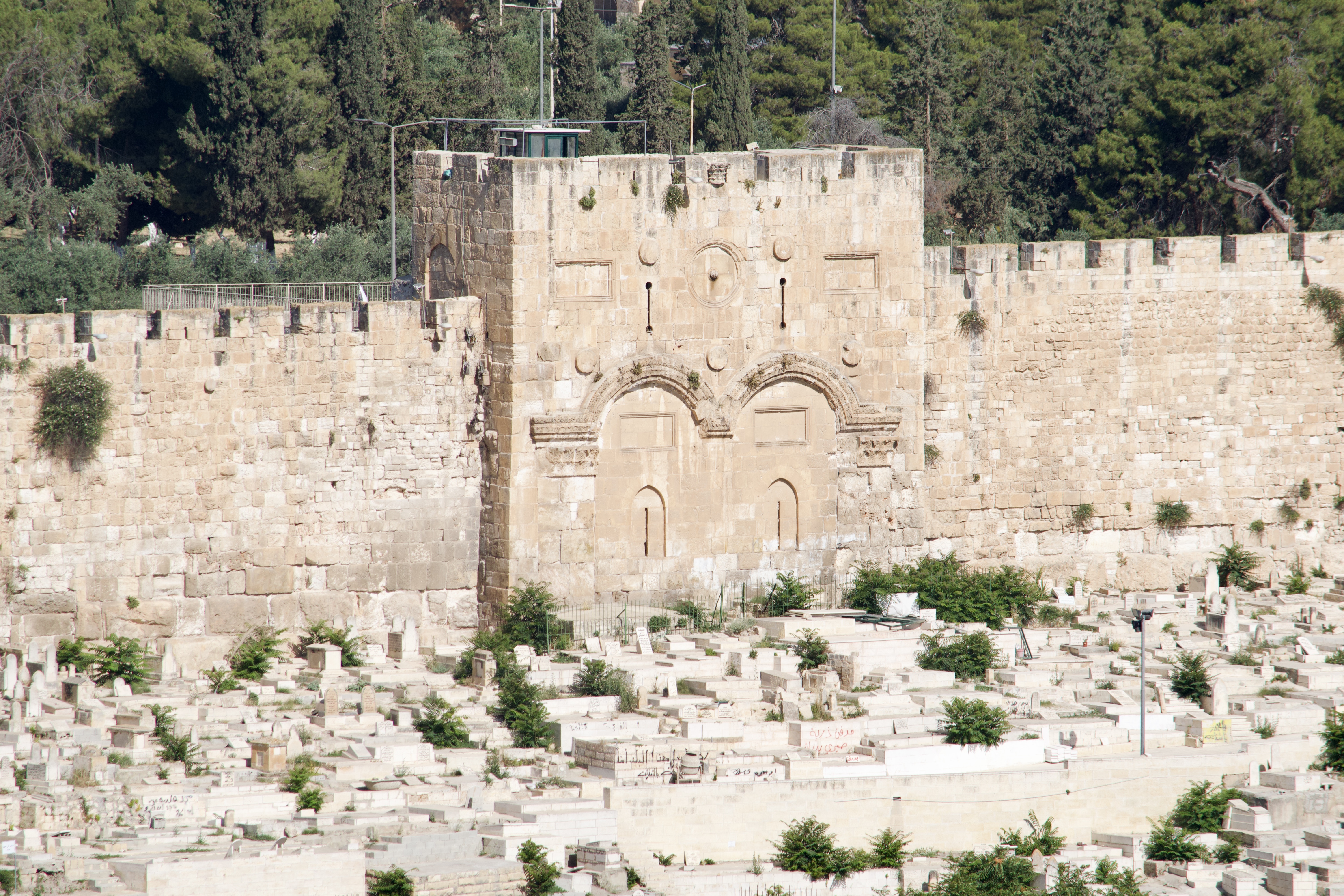
Ami also mentioned the Golden Gate (or Gate of Mercy / East Gate) that has been sealed since medieval times and is quite visible from the Mount of Olives.
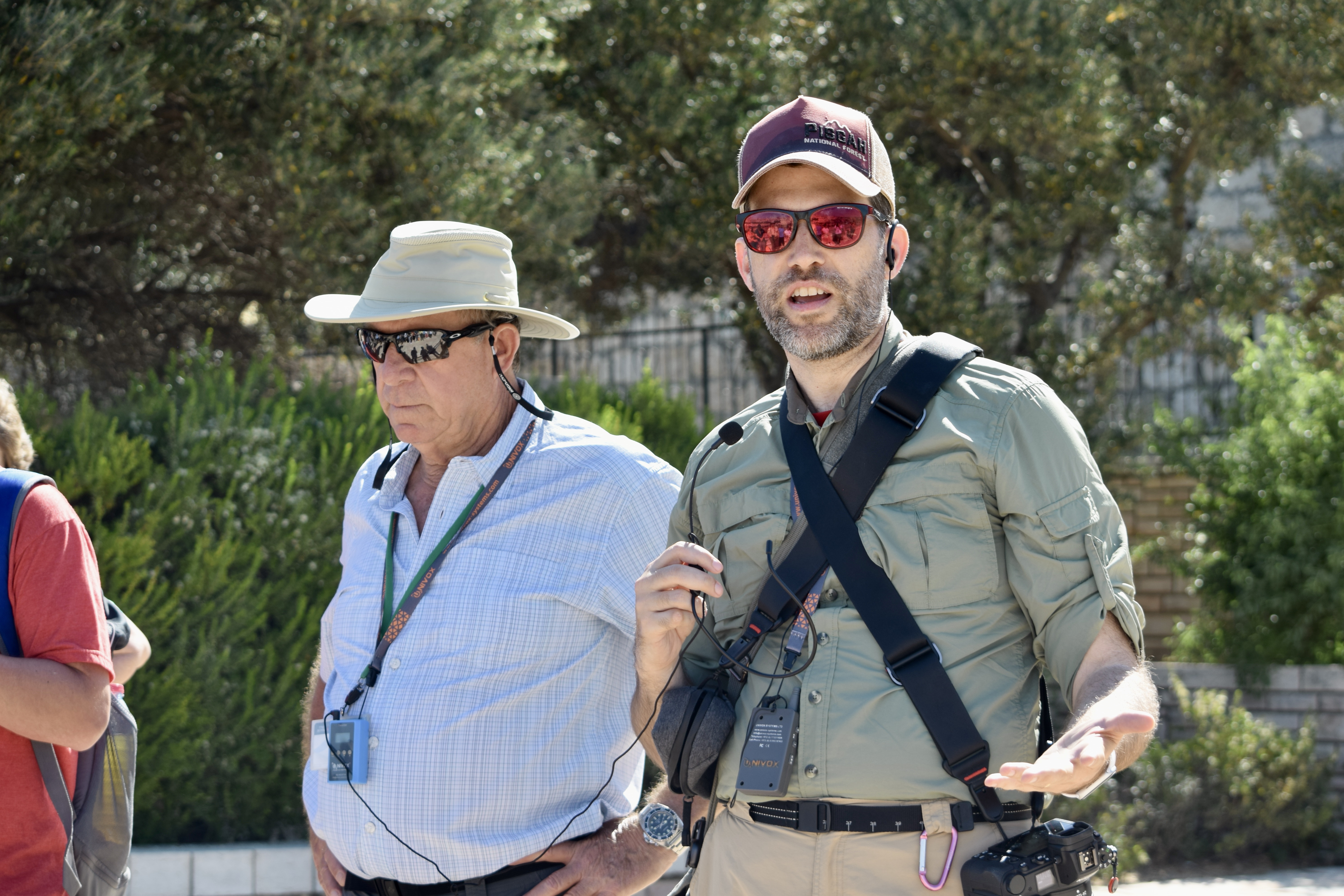
After Ami finished speaking, I talked to the group about Jesus always coming to Bethany on the Mount of Olives, and then about the 3 major events that took place during the last week of His life in this place (listed above). I talked about how being there made it easier to understand how Jesus could have looked down on the city, and the Temple Mount, and lament over it during the triumphal entry. I also talked to them about how this was the location where He ascended to heaven after His resurrection. This is a special place. Next Daniel read to us from the account of the triumphal entry in Luke 19.

We had a little time to take some family pictures…

Even got one with Ami, our Israeli guide…

…and then I gathered the girls together and talked to them directly about the significance of this place as we overlooked Jerusalem. I told them that while it is not “Holy,” the events that took place here are among the most important events in history. That I why I say it is a special place. I did not know it at the time, but Tonya took a photo from behind us as we were talking. I’m thankful that she captured this moment. All in all, this was a great visit to the Mount of Olives, even more meaningful to me than last time. I’m so glad I got to share it with Olivia and the girls.
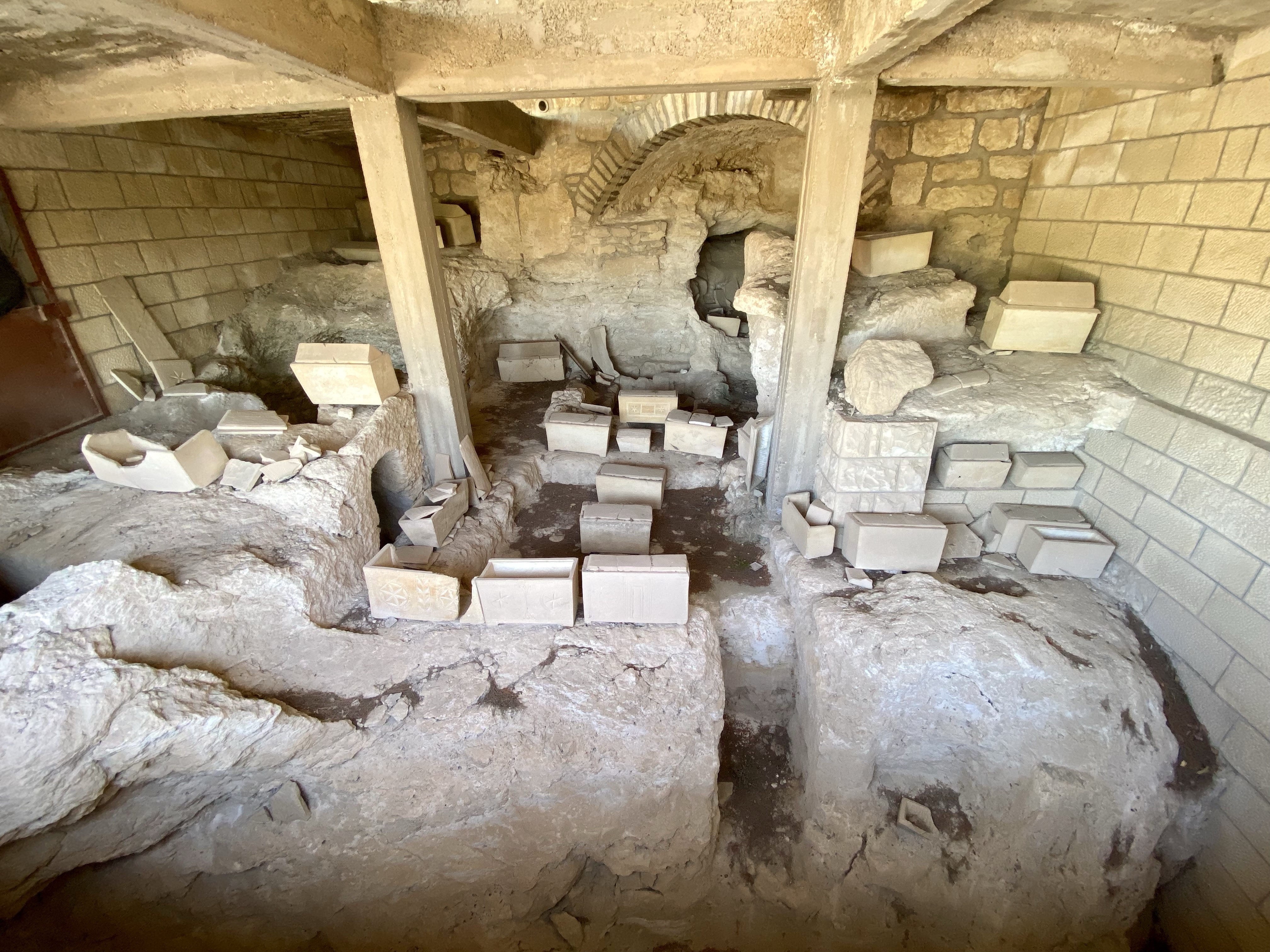
Next, we began to walk down the Palm Sunday Road toward the traditional location of the Garden of Gethsemane. I did not walk down this road last time, so this was a new experience. Along the way we saw a building that contained many ancient ossuaries (bone boxes) that were used to store the bones after the body had decayed in a tomb.

We also walked by the Church of Dominus Flevit that was designed by Antonio Belluchi to commemorate the tears of Jesus when he prayed in the garden. It is shaped like a tear drop.
Gethsemane

At the end of Palm Sunday Road, we reached the traditional location of the mount of Olives.
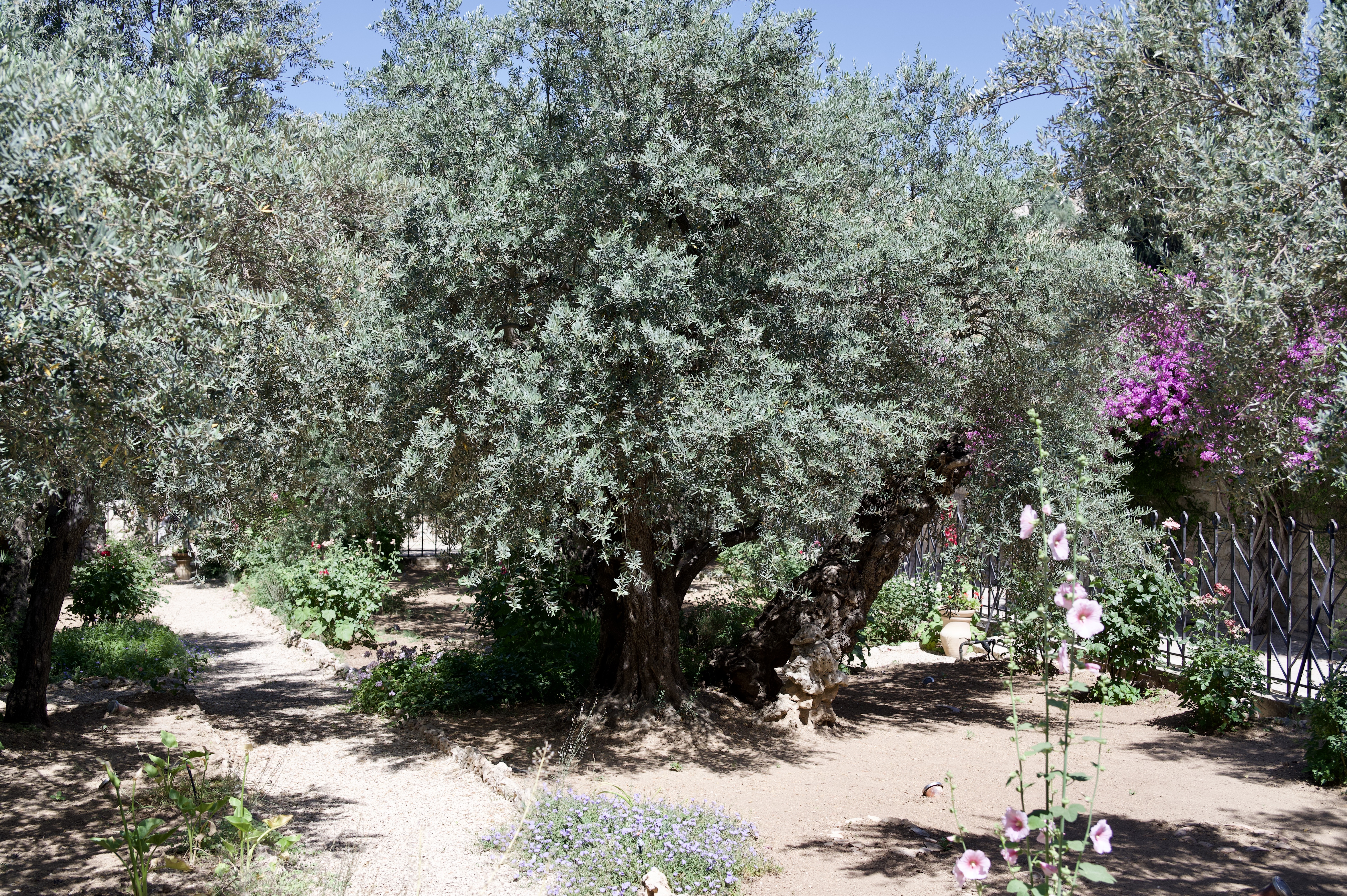
It contains 8 ancient olive trees that are dated to be approximately 900 years old (much past the time of Jesus).

They are located next to the Church of All Nations or the Church of Agony, named after Jesus’ prayer of agony in the garden. The front facade of this church building is covered in beautiful mosaics.

The inside contains mosaics depicting Judas’ betrayal kiss (Matt 26:47-50; Mark 14:43-46; Luke 22:47-48), Jesus’ prayer of agony (Luke 22:44), and Jesus healing the ear of Malchus after Peter cut it off (Luke 22:51; John 18:10).
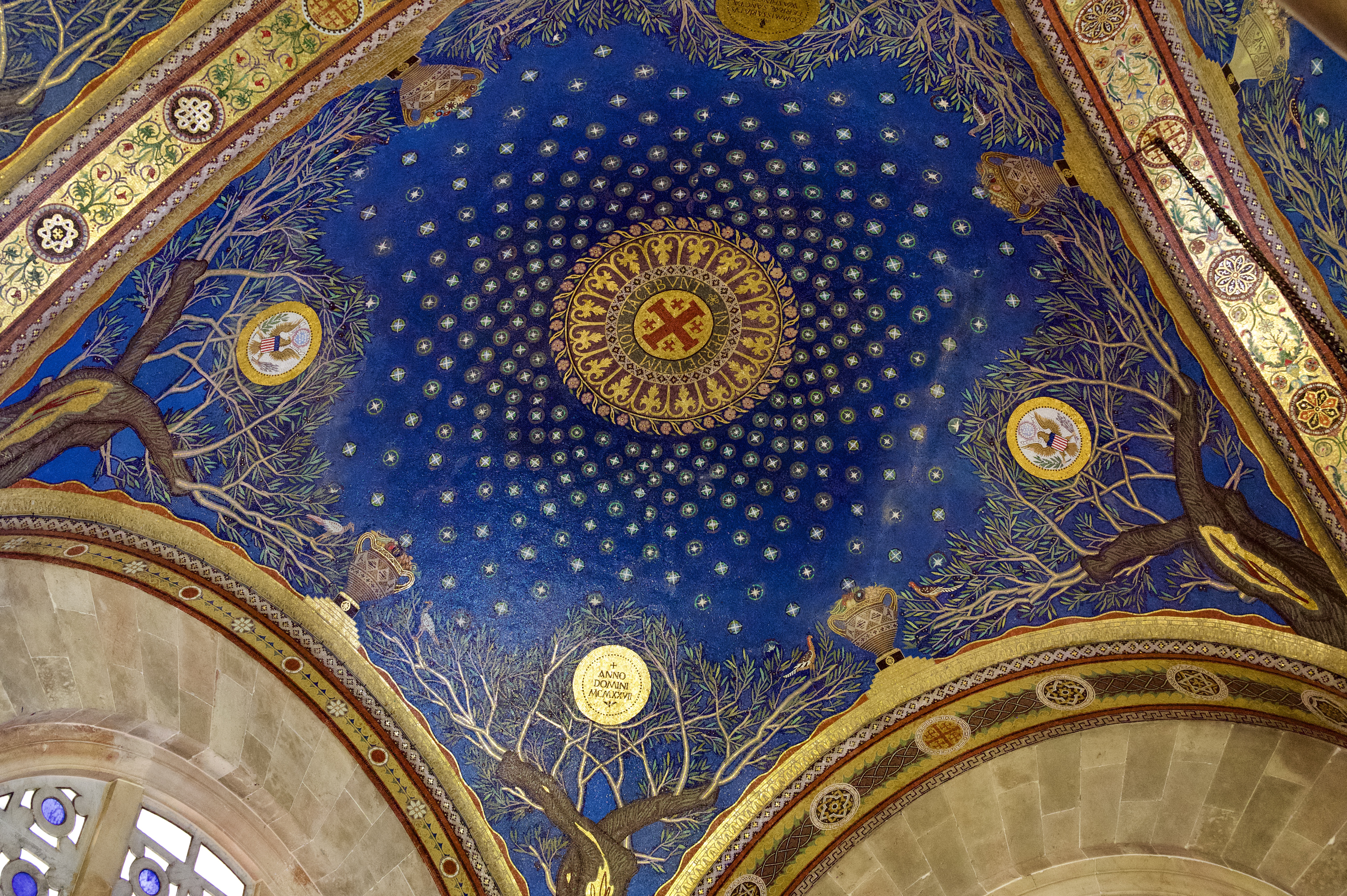
I learned something new this time that even the U.S. contributed to this structure, and you can see an eagle at the top of one of the domes inside. While we were inside, there was a service going on in Portuguese, which is neat since Jana Palk is a native of Brazil where they speak Portuguese, and her husband Daniel was a missionary there for many years.

After leaving the church, we walked across the street to the bus, and I was able to get a really good view of the Valley of Kidron that is mentioned above.
“Old City” of Jerusalem
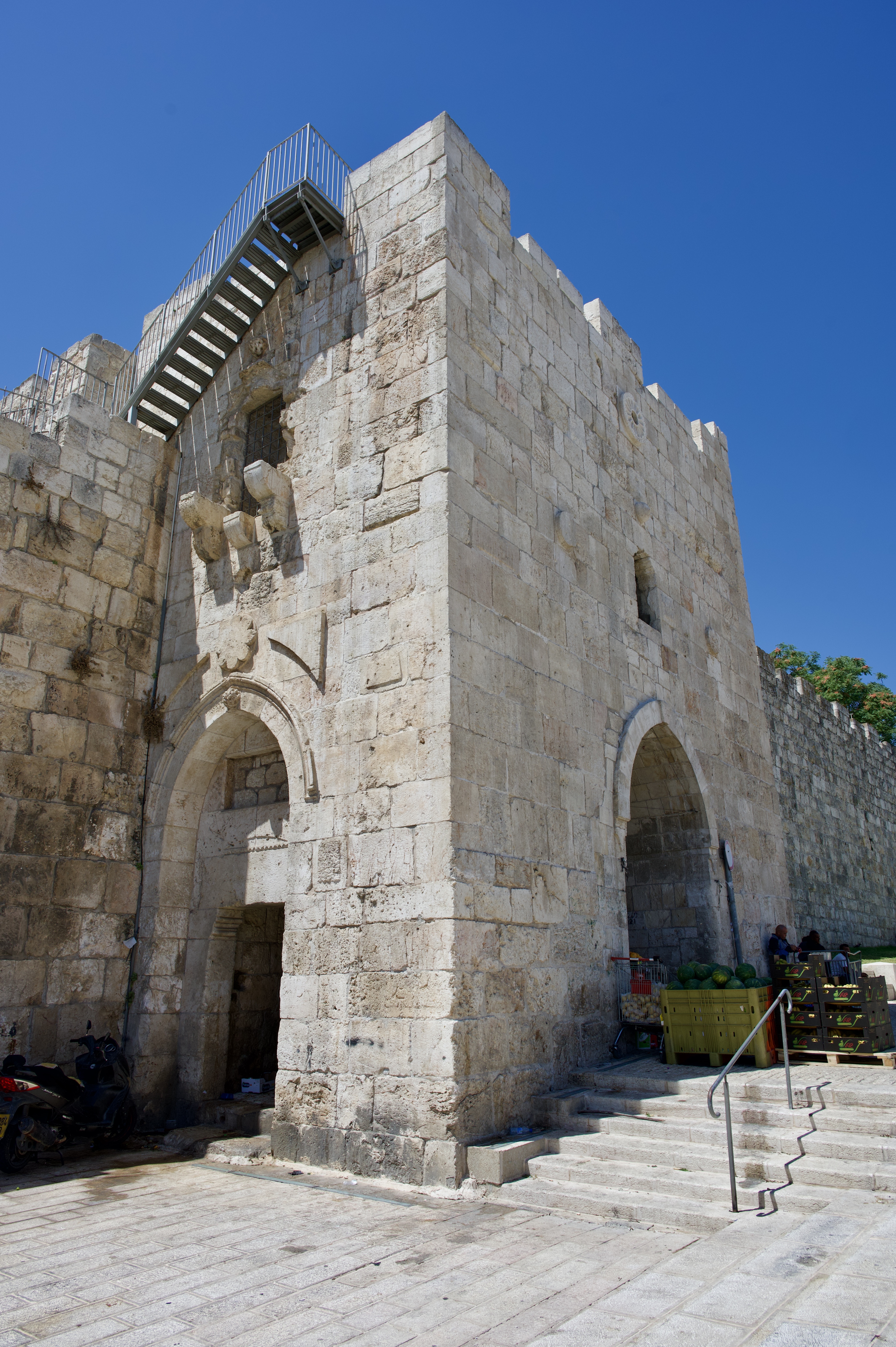
After getting back on the bus, we made the short drive over to Herod’s Gate (Flower Gate) in the Old City of Jerusalem.

We entered the city through this gate into the Muslim Quarter.
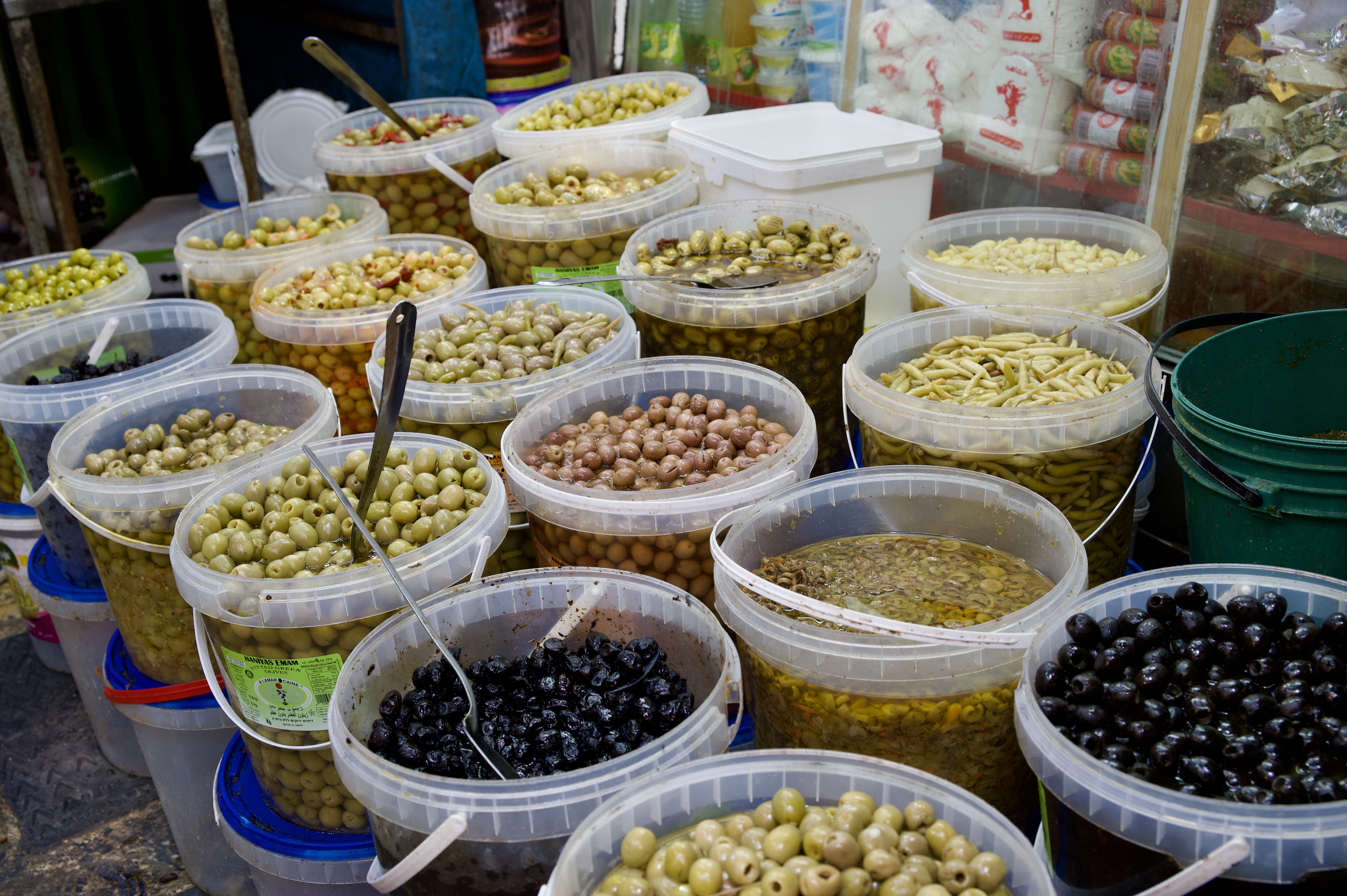
This is probably my favorite quarter to walk around in because of all the shops selling all kinds of different things. However, it is very crowded, so can be a bit stressful.
Pool of Bethesda / Church of St. Anne
We walked over toward the Lion’s Gate to our first stop in the Muslim Quarter, which was the Pool of Bethesda. This was excavated in the 19th century, and was the site of Jesus healing of the invalid in John 5:1-17. John gives details about Bethesda that it was near the “sheep gate” and had a “five roofed colonnade. This would have placed it north of the temple and outside the city walls during the time of Jesus.
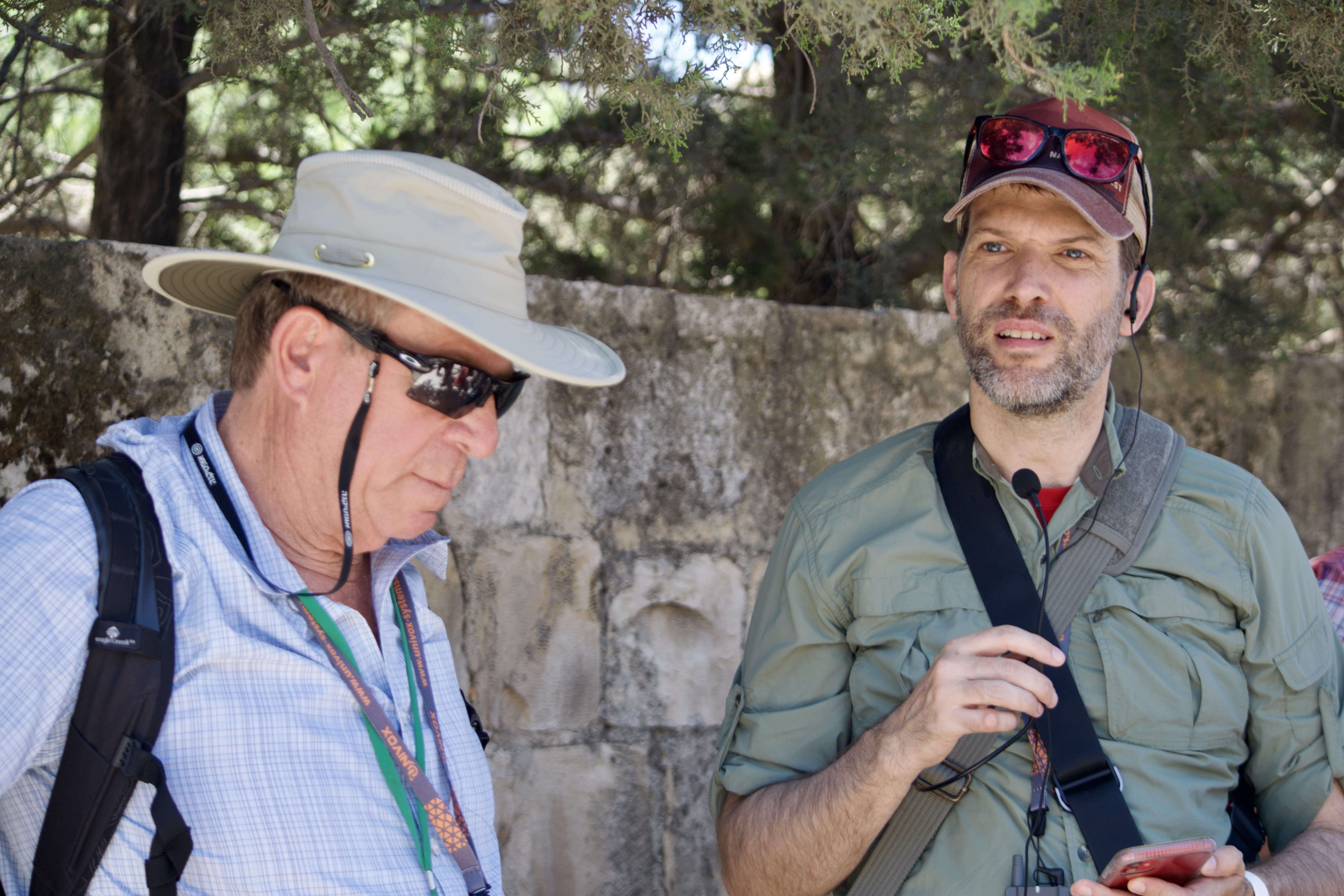
When we first arrived at the pool, I read to the group from the account of Jesus healing the lame man in John 5, and then Ami talked about the site. On my first trip, I found the ruins to be very confusing, but after Ami’s explanation, it makes a lot more sense. Bethesda was two pools (North / South) and in between those are the remains of two different churches that have been built on the same site over the centuries.

I was able to clearly see south pool from our first vantage point.

I walked to the north side and was also able to clearly make out the northern pool.

Right next to Bethesda is the Church of Saint Anne. This is a French Roman Catholic Church, and much of the current structure dates back to the 12th century AD. Under this building is one of the traditional birthplaces of the virgin Mary (Anne was supposedly her mother). However, St. Anne’s is most know for its beautiful acoustics.
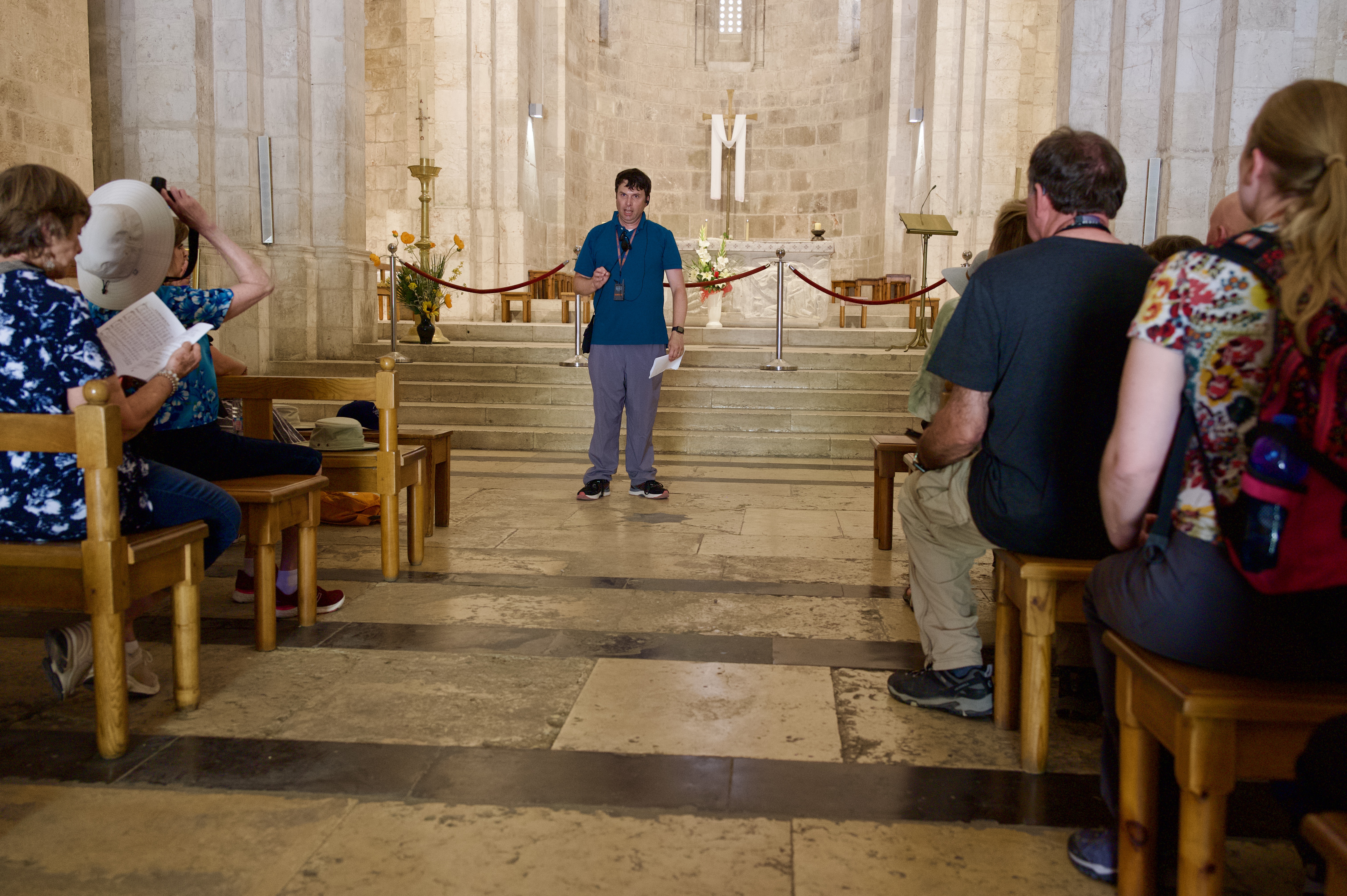
Our group entered St. Anne’s and Derek led us in a few hymns. We started with “It is Well With My Soul,” which is my favorite Hymn, and it sounded unbelievable. It was very moving.
Convent of Sisters of Zion
Our group exited St. Anne’s and again navigated the streets of Jerusalem to the Convent of sisters of Zion. This was a new place for me, and the significance lies in what is underneath the convent.
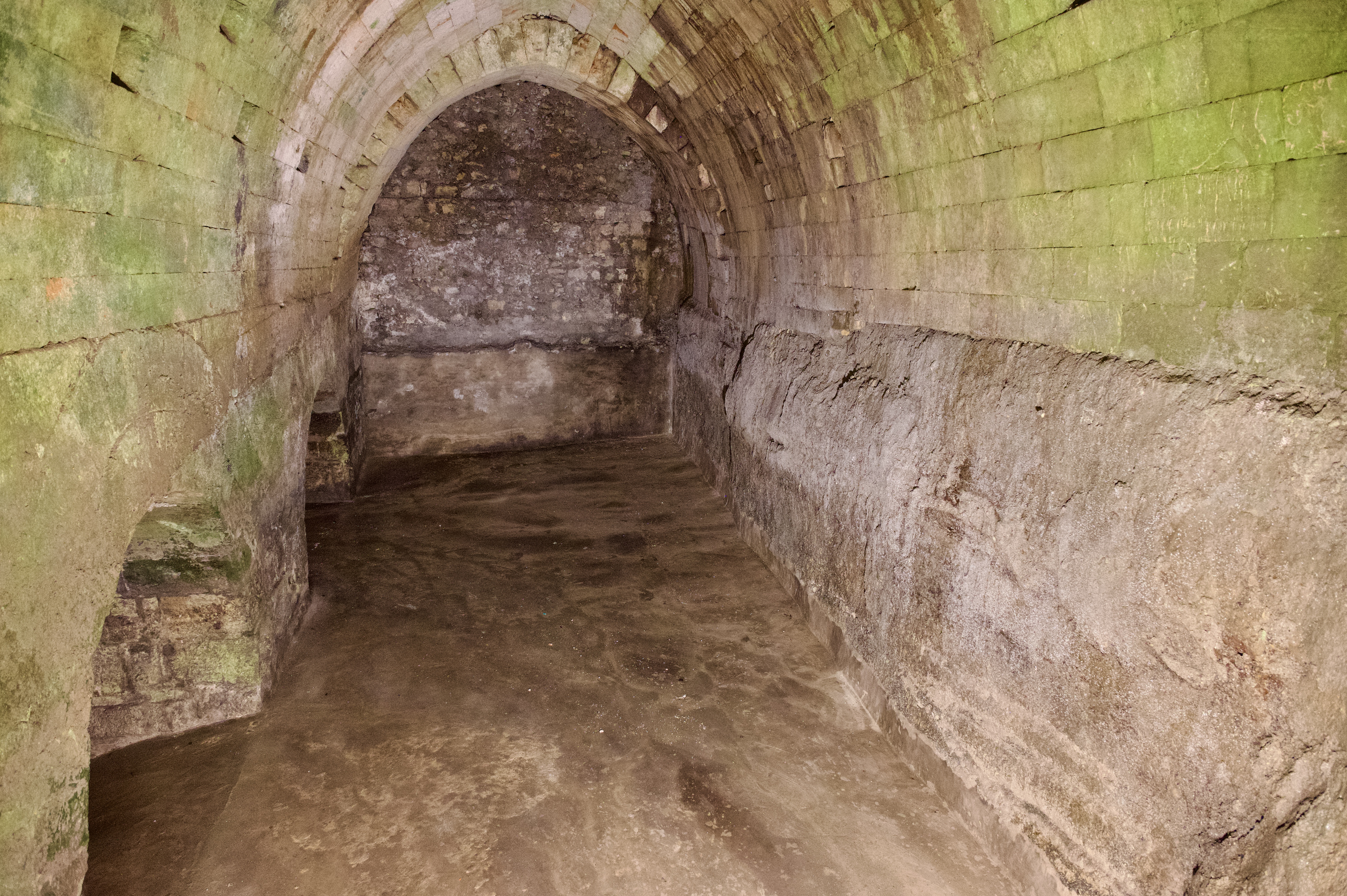
As we went down into the site, beneath the level of the current city, the first thing that we saw was a cistern that had been cut out of the moat that surrounded the ancient Fortress Antonio. This fortress was built by Herod the Great and was intended to help prevent uprising in the city of Jerusalem. This was likely the location where Jesus appeared before Pilate (Matthew 27:1-16; Mark 15:1-15; Luke 23:1-25; John 18:28-19:22), since Pilate almost certainly would have come to this place when in Jerusalem. It is also likely this is the place referred to as the “barracks” in Acts 21:37 where Paul was taken after his arrest in the temple. Paul would have been held here until he was moved to Caesarea in Acts 23:23. It was on the steps of the barracks that Paul made his defense before the Jews in Acts 22:1-21.

Next we saw pavement stones from the streets of Jerusalem in the 1st century AD that have not been restored.
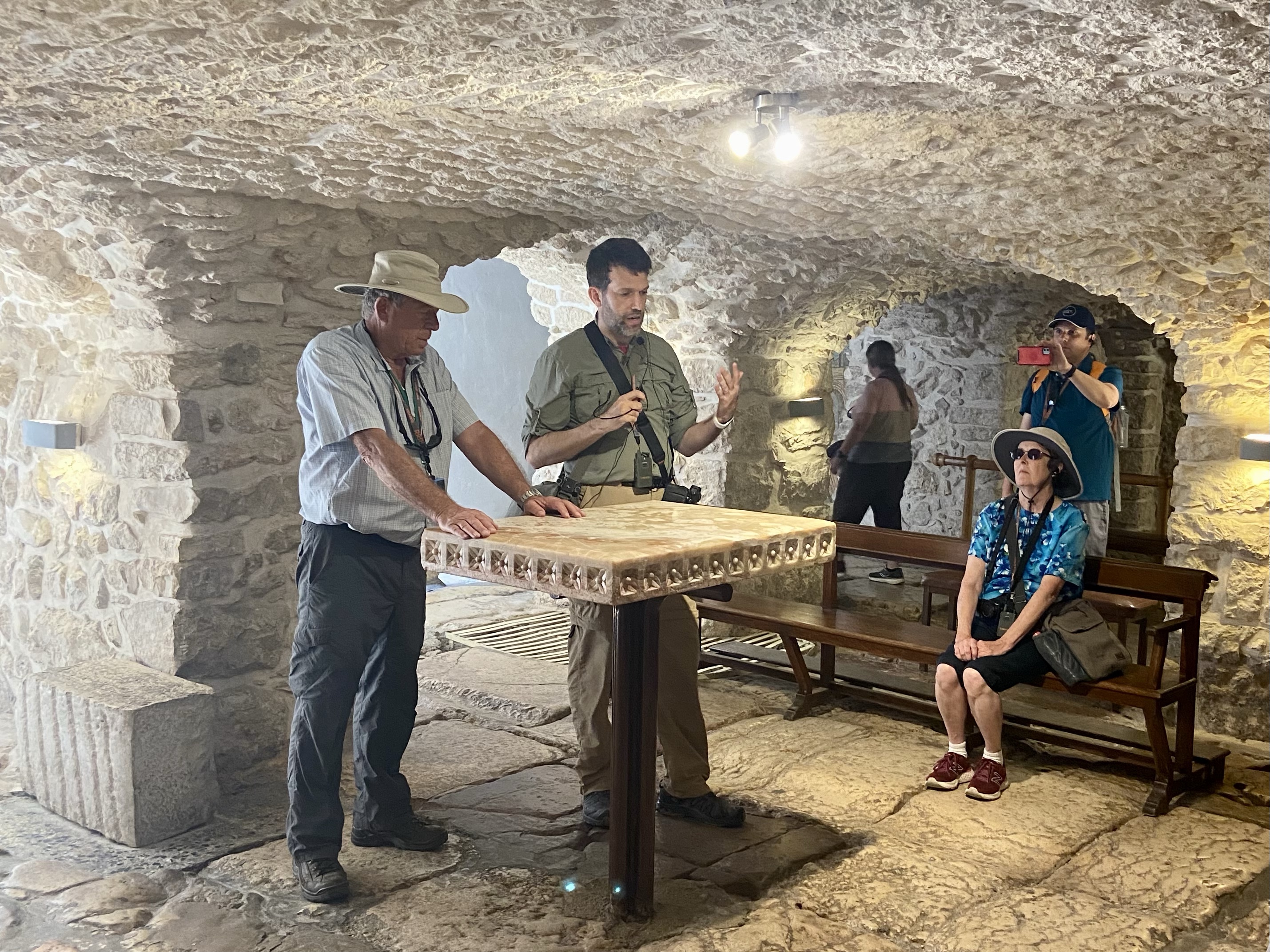
It was at this spot that Mike Johns read to us from Luke 23 about Jesus’ trial, and then I spoke to the group about Paul’s imprisonment at the Fortress Antonia.

This was awesome, and I’m glad I got to see it.
Via Dolorosa / The Way of the Cross
Back out on the street, I accepted an English translation of the Quran from a Muslim “evangelist” who stopped me. Ami seemed surprised that they were openly recruiting.
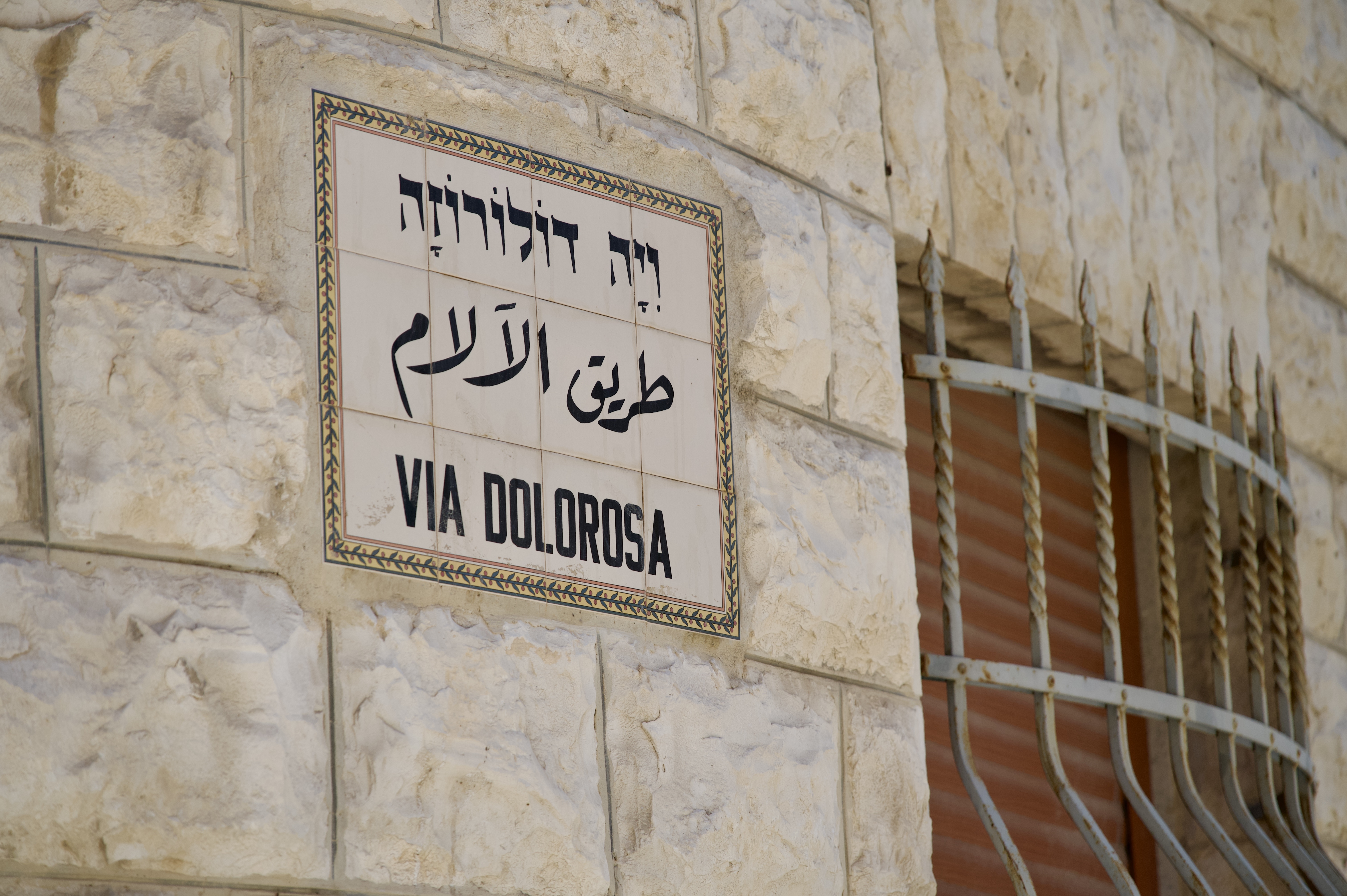
Very soon we began to see the signs for the Via Dolorosa. This is the traditional path that Jesus took, forced by the Roman soldiers, on the way to his crucifixion.

Before we began to see the actual stations of the cross, we stopped at the Basti Restaurant for lunch. We sat with our friend and neighbor Bonnie and enjoyed a delicious meal. Olivia and I had chicken shawarma and the girls had pizza.

We all had a lemon drink that had ice and mint. All of this was wonderful and was probably the best meal I’ve had in Israel.
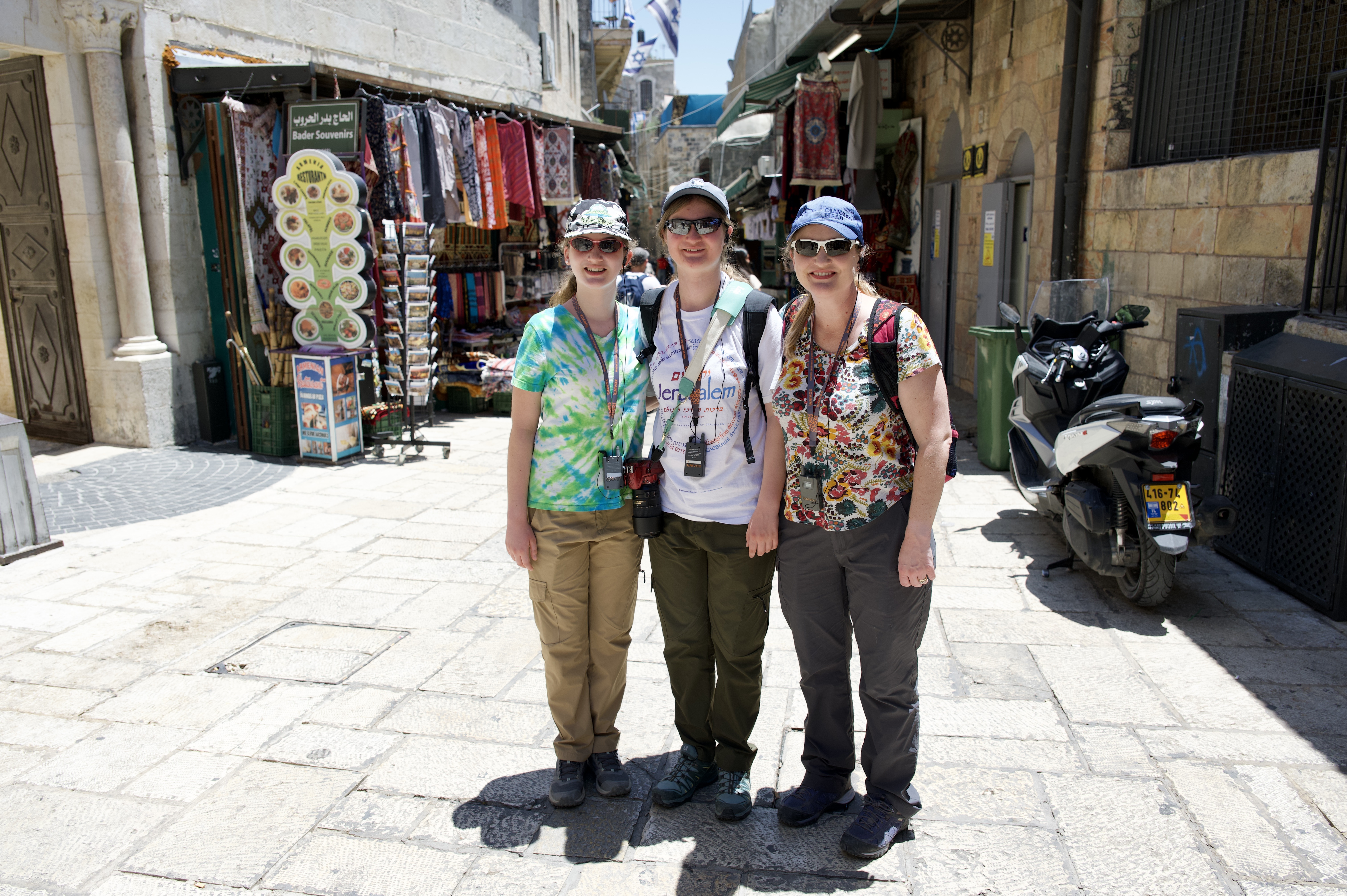
After lunch, we began to again work our way through the Muslim Quarter and the stations of the cross on the Via Dolorosa.
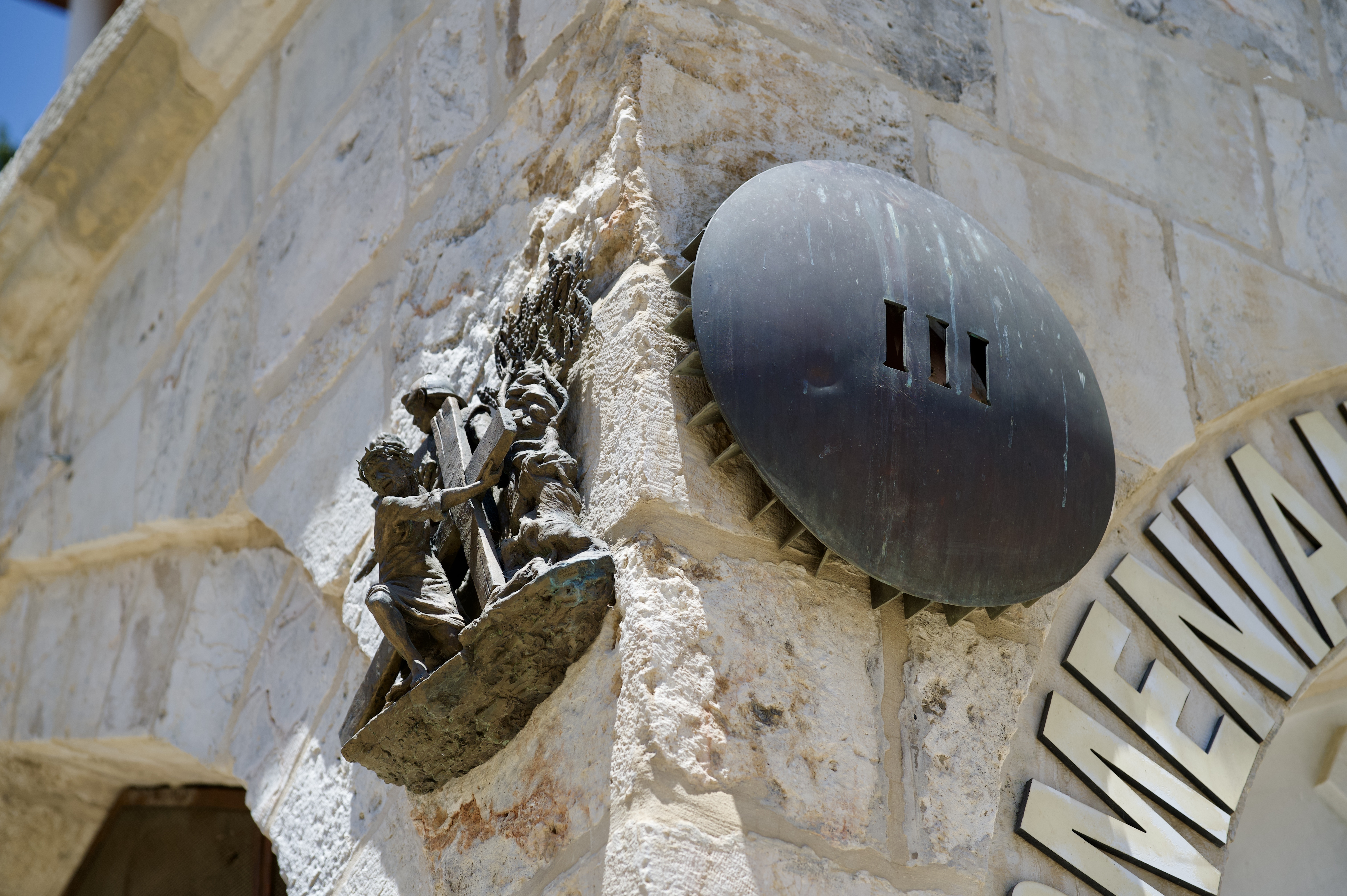
The winding route goes from the approximate location of the former Antonia Fortress to the Church of the Holy Sepulchre — about 2,000 feet. The current route has been established since the 18th century, replacing various earlier versions.
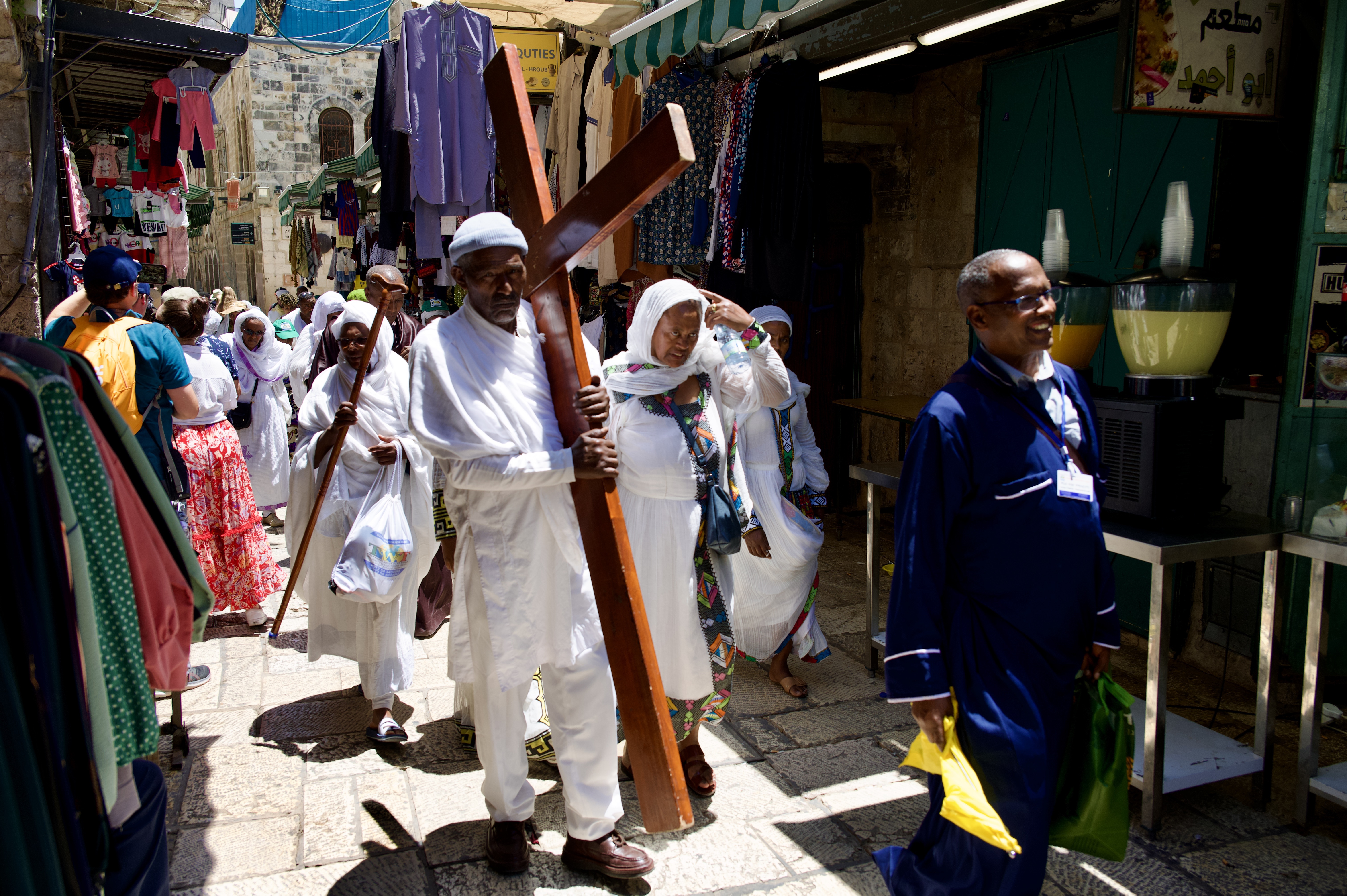
It is today marked by nine Stations of the Cross in the city and five more inside the Church of the Holy Sepulchre.
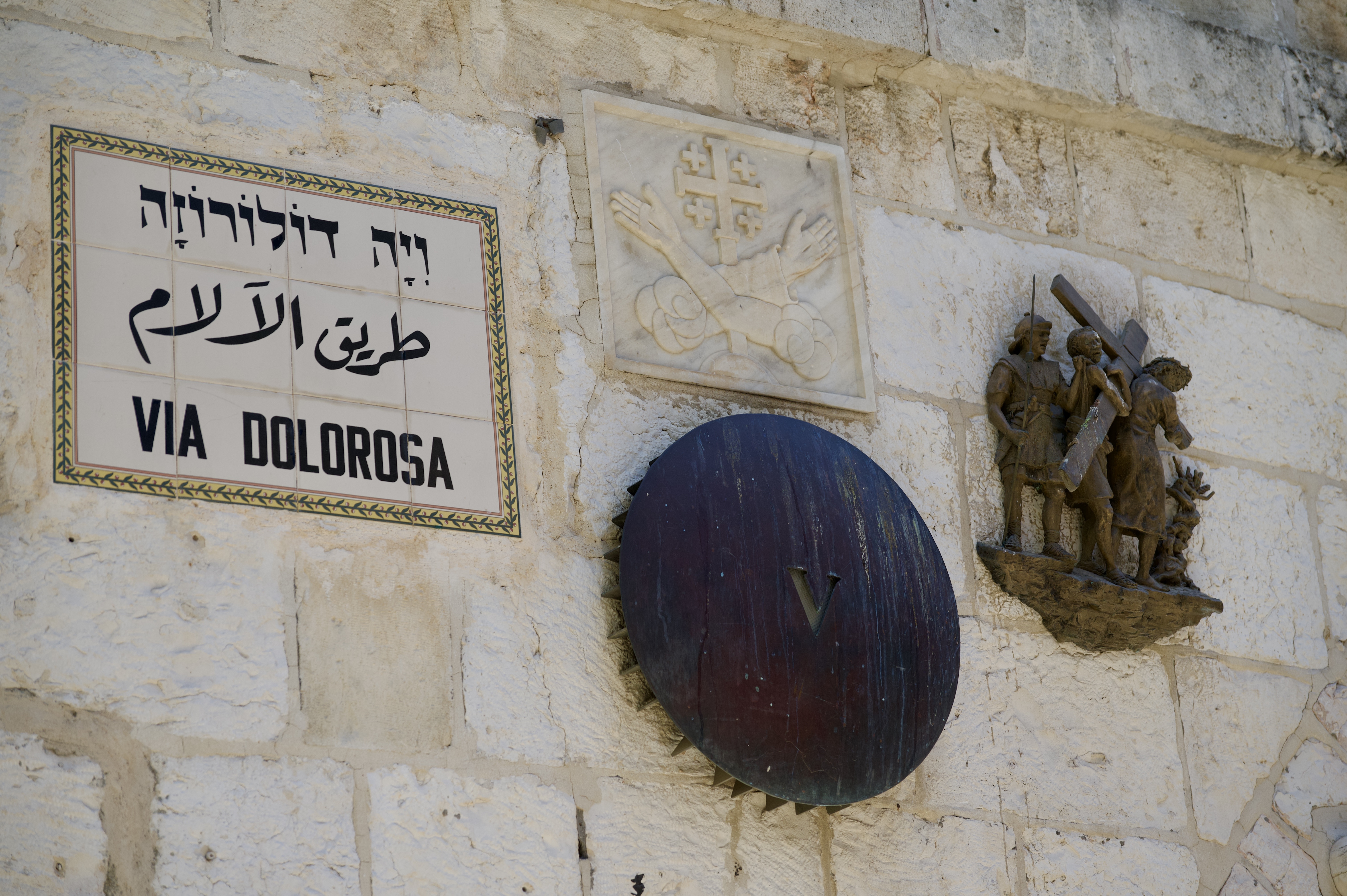
We didn’t go to the Church of the Flagellation and the Chapel of Condemnation, but these mark the beginning of the Via Dolorosa, and are the location of the first two stations. I saw these the last time I was in Jerusalem, and didn’t really feel the need to go there again.The 14 steps that are included in the “Way of the Cross” to show the way of Jesus from his trial to burial (Matt 27: Mark 15; Luke 23; John 18:28–19:42). We don’t know the exact spot where any of these things occurred, because we don’t have any evidence from the time of Jesus. Also, not all these steps depict things that appear in scripture.

Ami took us through the Muslim Quarter and pointed out several stations to us as we wound our way through the market.
Church of the Holy Sepulchre
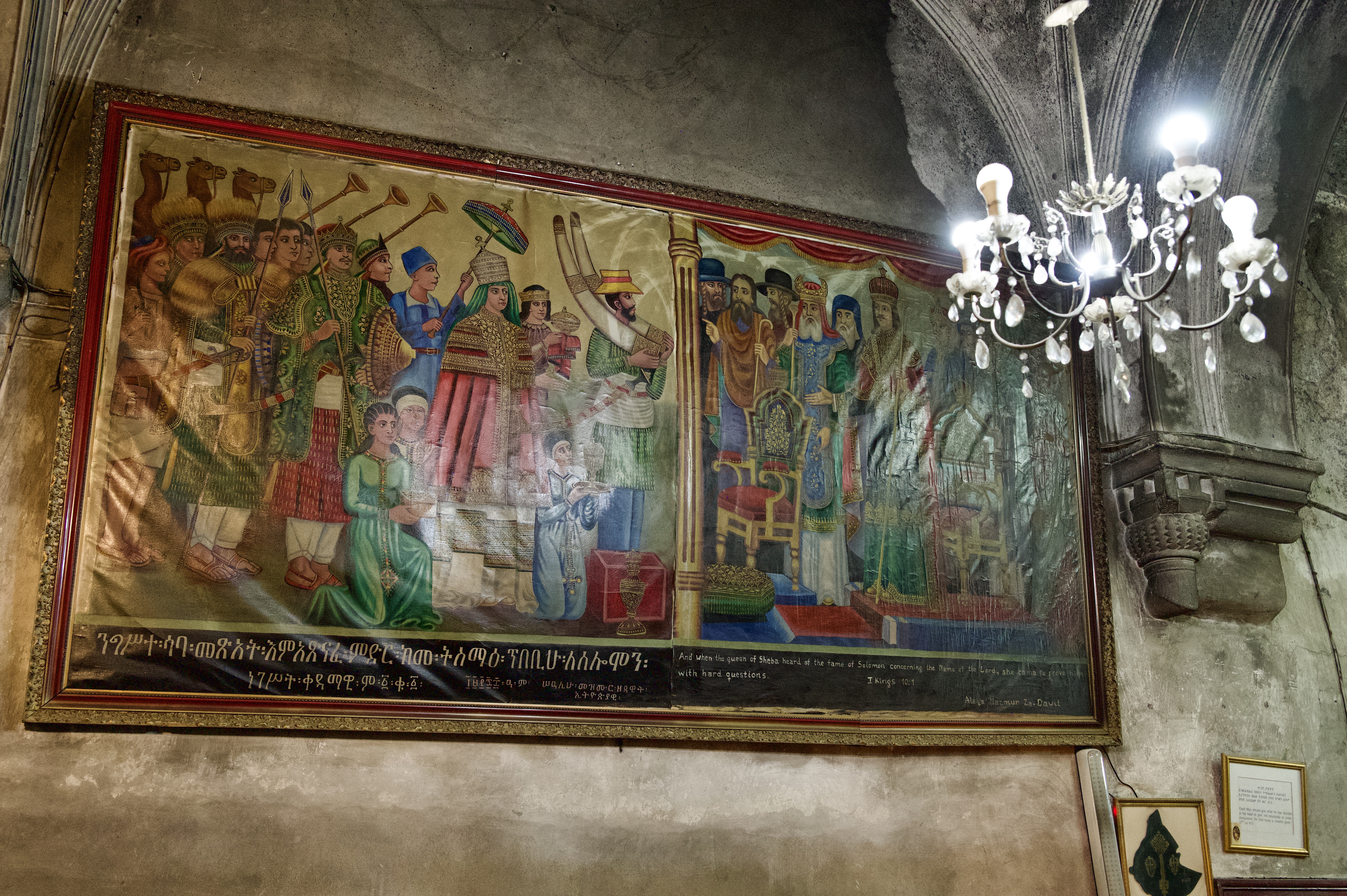
The Via Dolorosa took us into the Christian Quarter and ended at the Church of the Holy Sepulchre. We did not initially go in through the main entrance, but instead went in via the roof that is in the area for the Ethiopian Orthodox. Just inside the roof entrance, Ami pointed out a painting of the Queen of Sheba who came to meet Solomon in 1 Kings 10:1-11. Ami said that this event along with Philip’s conversion of the Ethiopian Eunuch in Acts 8:26-39, tie Ethiopia to the Jewish / Christian world.
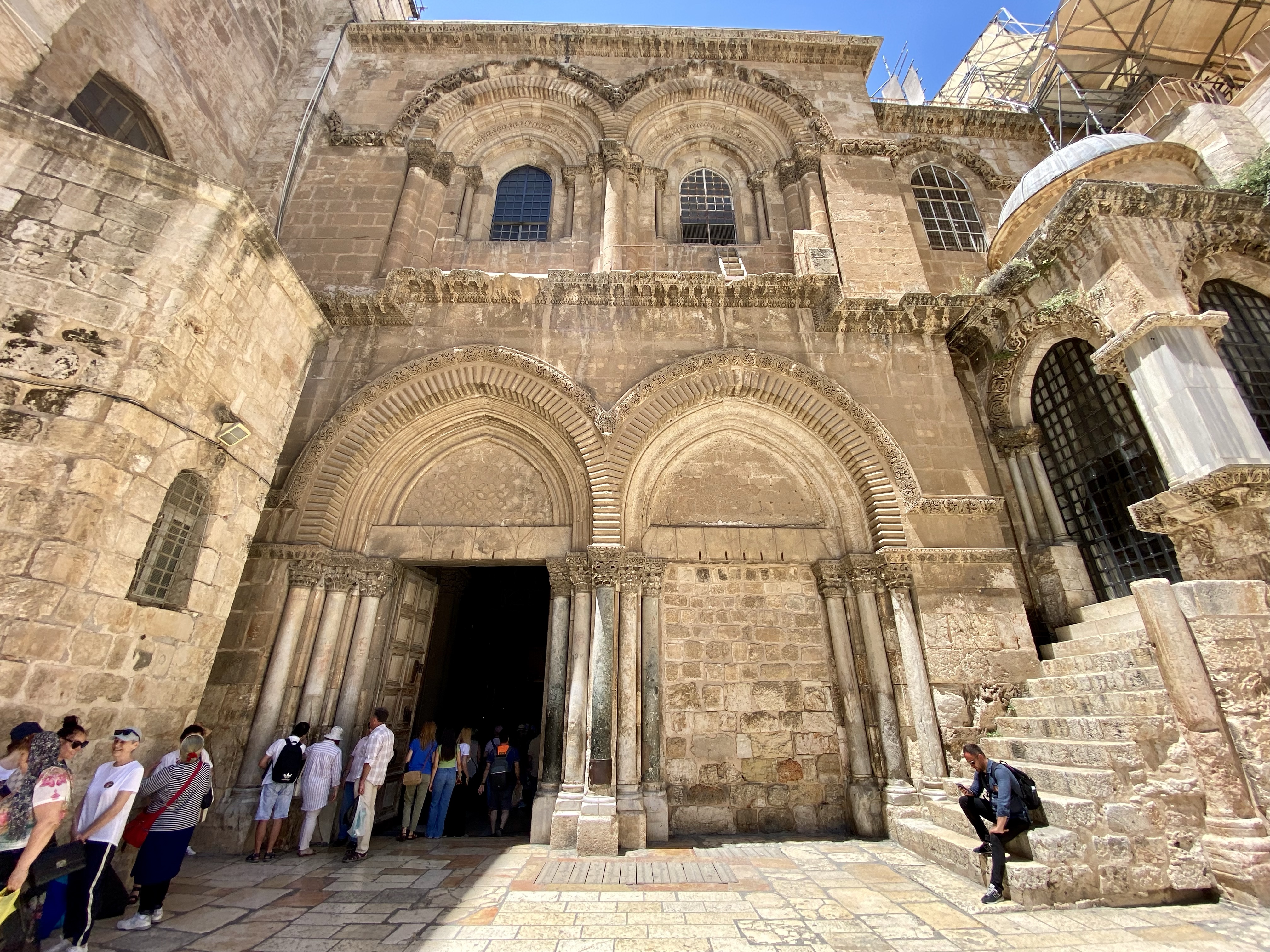
After moving through this area, we came out by the main entrance, and Ami told us more about the structure. It has been built and rebuilt several times from 335 AD to 1048 AD, and even through more modern times.
According to traditions dating back to at least the fourth century, this Church the site where Jesus was crucified (Golgotha – Matt 27:33; Mark 15:22; John 19:17), and Jesus’s empty tomb, where he was buried and resurrected (Matt 27:57-28:10; Mark 15:42-16:8; Luke 23:50-24:12; John 19:38-20:10). This site is incredibly ornate with lots of gold and mosaics covering the walls and the traditional spots.
This site is shared by multiple denominations who each have their own areas of the structure. The groups include Roman Catholic, Greek Orthodox and Armenian Apostolic, and to a lesser degree the Coptic Orthodox, Syriac Orthodox and Ethiopian Orthodox. The Status Quo, an understanding between religious communities dating to 1757, applies to the site.

As an example of Status Quo, there is wooden ladder that has been propped up on the outside of the facade since 1728. The ladder is referred to as “immovable” due to the agreement of the Status Quo that no cleric of the six Christian orders may move, rearrange, or alter any property without the consent of the other five orders.
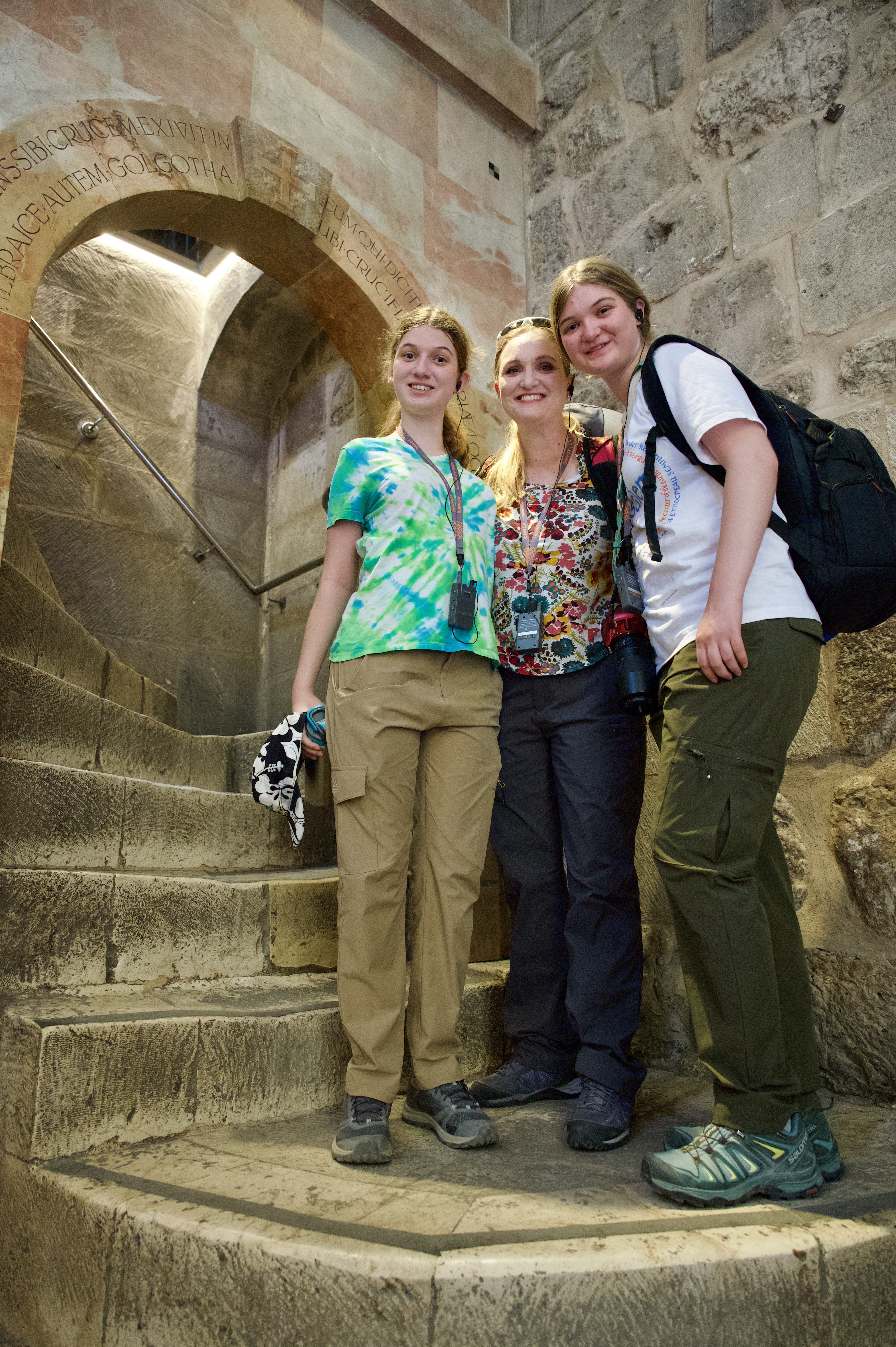
We re-entered the building, and then immediately went upstairs to the right to the traditional place for Golgotha.

There was a line of people waiting to touch and kiss the spot, which is very ornately decorated, and the rock that is supposed to be Golgotha is under glass.
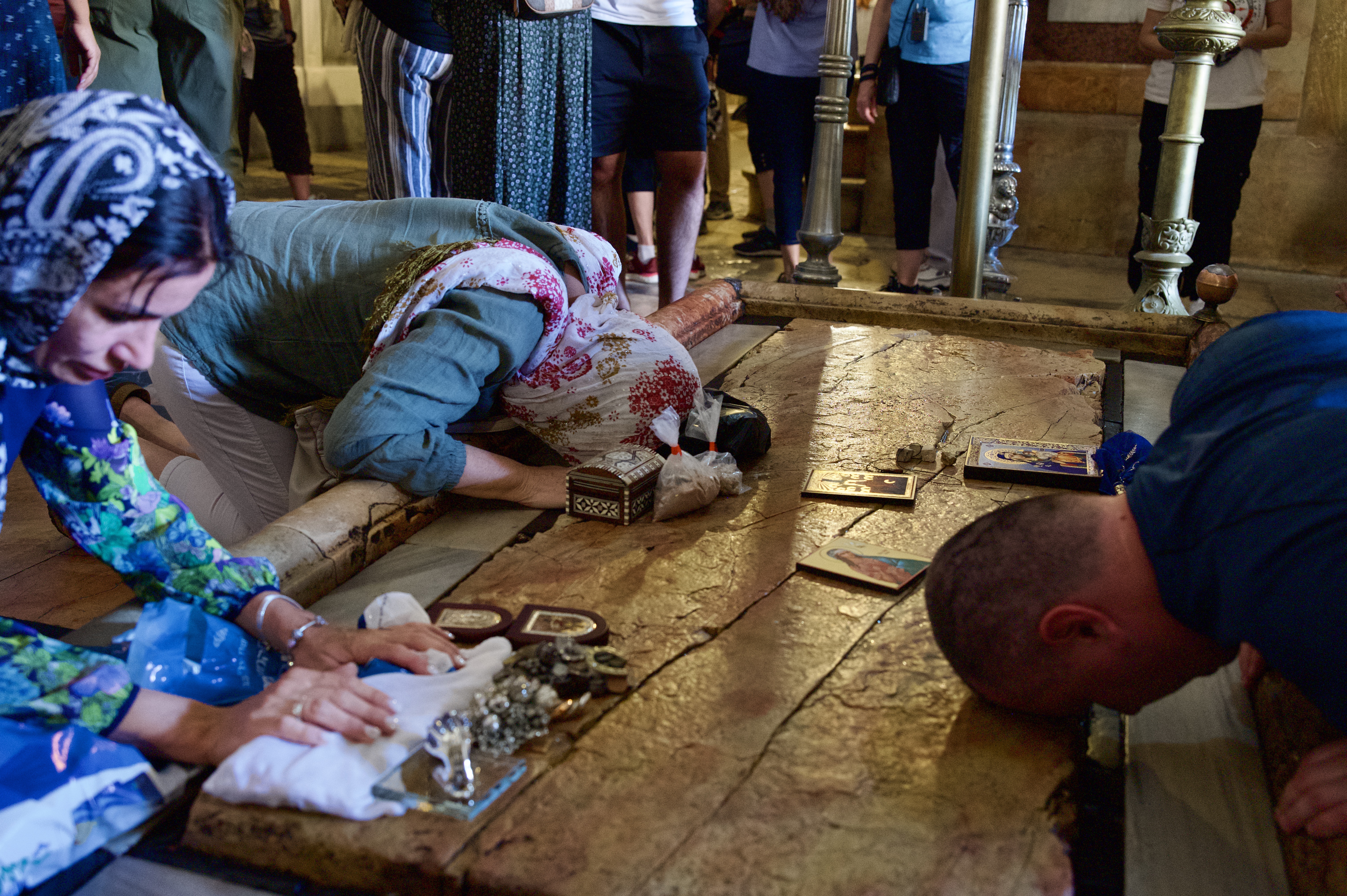
Next, we went back downstairs to see the slab where tradition says that Jesus’ body was laid to prepare it for burial. People come and place token on this slab and then touch it and kiss it. Behind the slab are beautiful mosaics depicting:
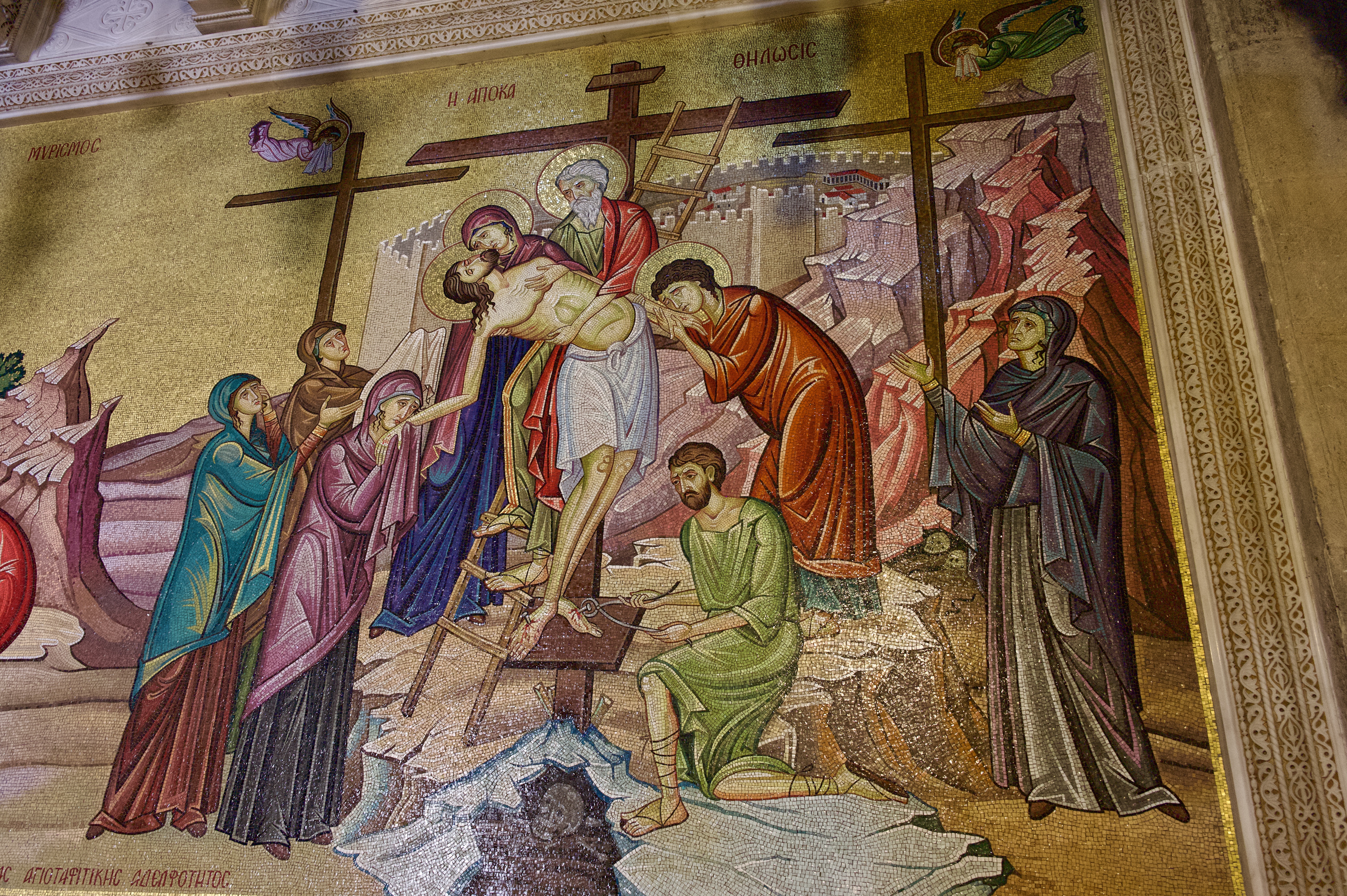
Jesus being taken down from the cross…

Jesus’ body being prepared for burial…

Jesus being placed in the tomb…

In the main chamber is the traditional tomb, and it is enclosed by a 19th-century shrine called the Aedicula. The line for this was much shorter than the last time I was here, but I still did not try to go in.
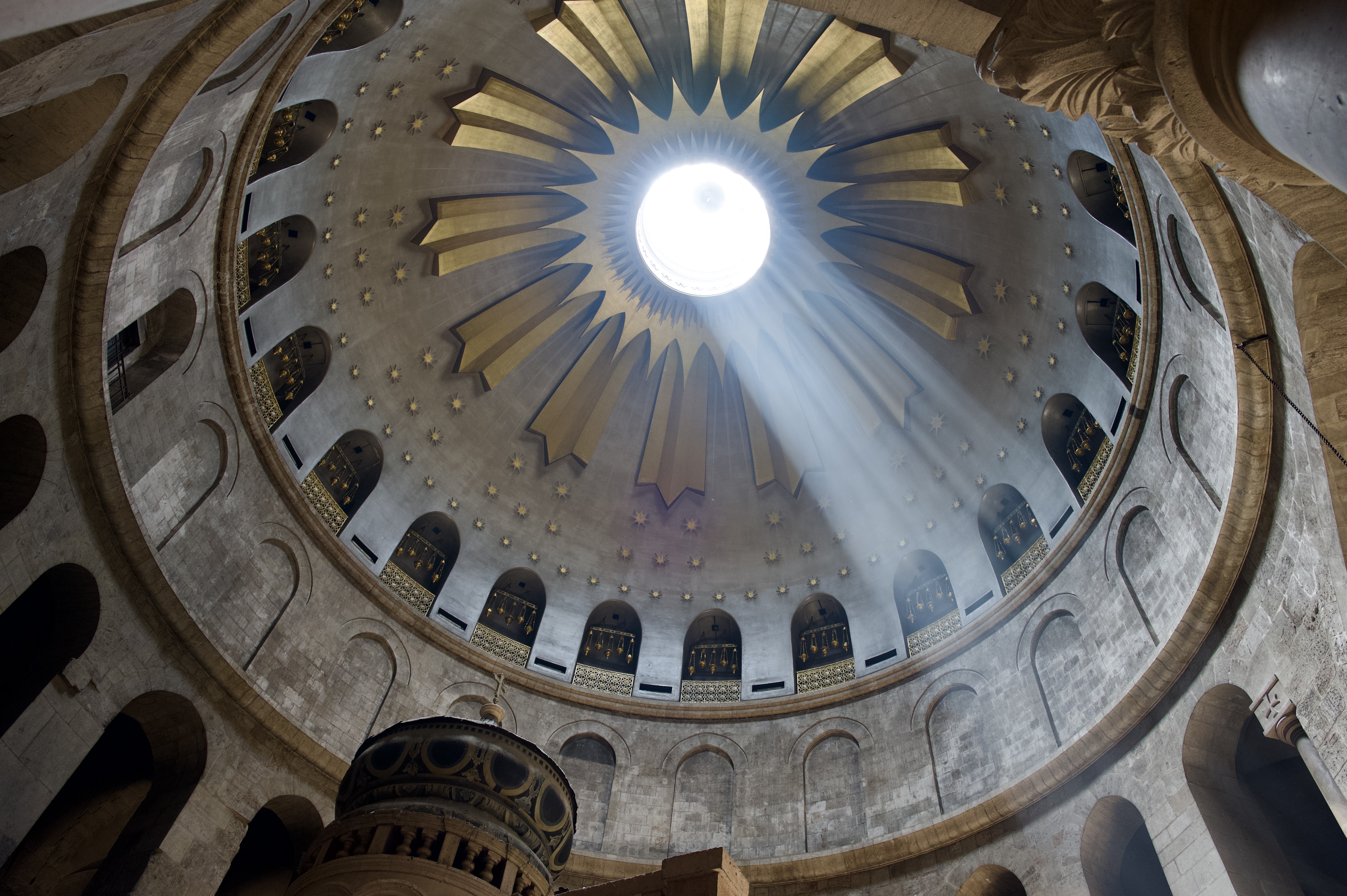
Up above the Aedicula is a majestic cupola with a circular glass top that allows the sunlight to shine through.

The last thing of note that we saw was one of the very few spots that is not ornamental in any way and is just off from the main chamber. It is a first century tomb and gives a good perspective on what tombs of that time looked like.
While I enjoy taking pictures at this place, I do not buy into the tradition, and it seems to be very much the opposite of what Jesus was about with all the elaborate ornamentation. Also, archaeology cannot prove the location where Jesus was buried, but this leaves room for faith. Jesus himself told Thomas “Have you believed because you have seen me? Blessed are those who have not seen and yet have believed.” (Jn 20:29). This is the nature of faith (Heb 11:1).
From the Church of the Holy Sepulchre, we briefly stopped by a shop in the Christian Quarter for a break and to allow people to browse.
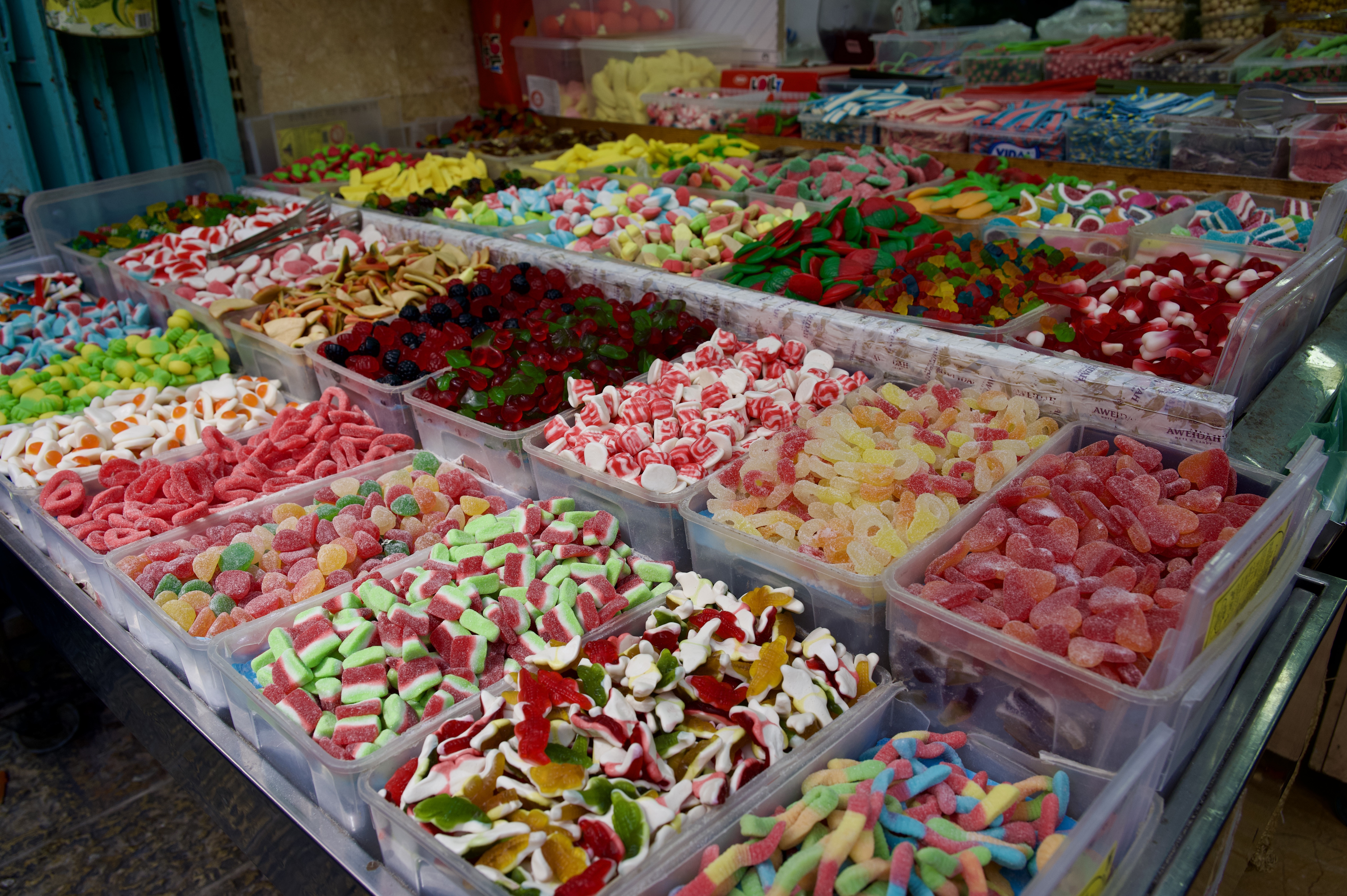
We then went back into the Muslim Quarter and again navigated the market.

We stopped at a spice shop along the way, and several from our group purchased some spices.
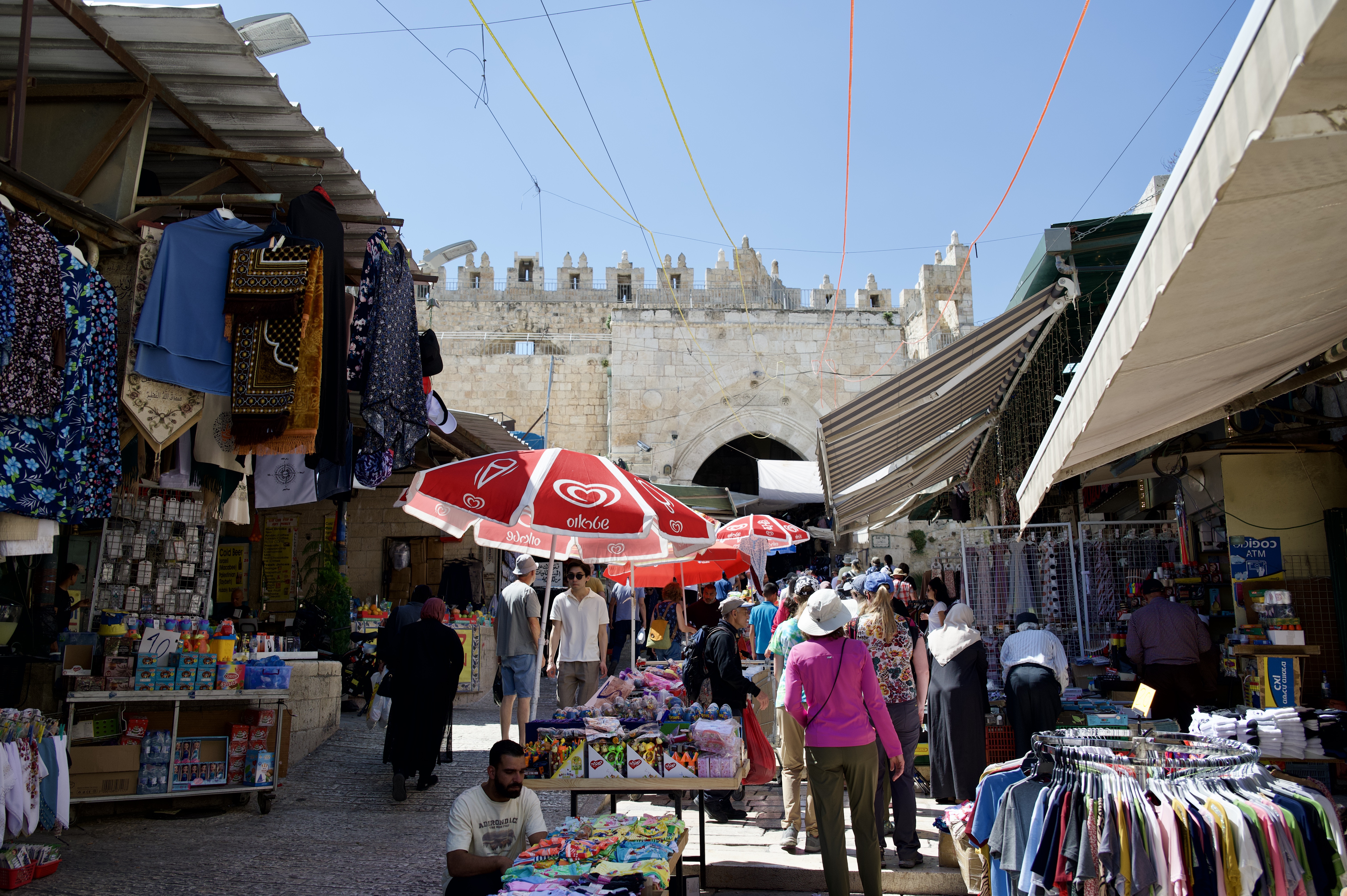
Finally, we left the city through the very busy Damascus Gate. Even though it was busy, it was not nearly as busy as the last time I was here.
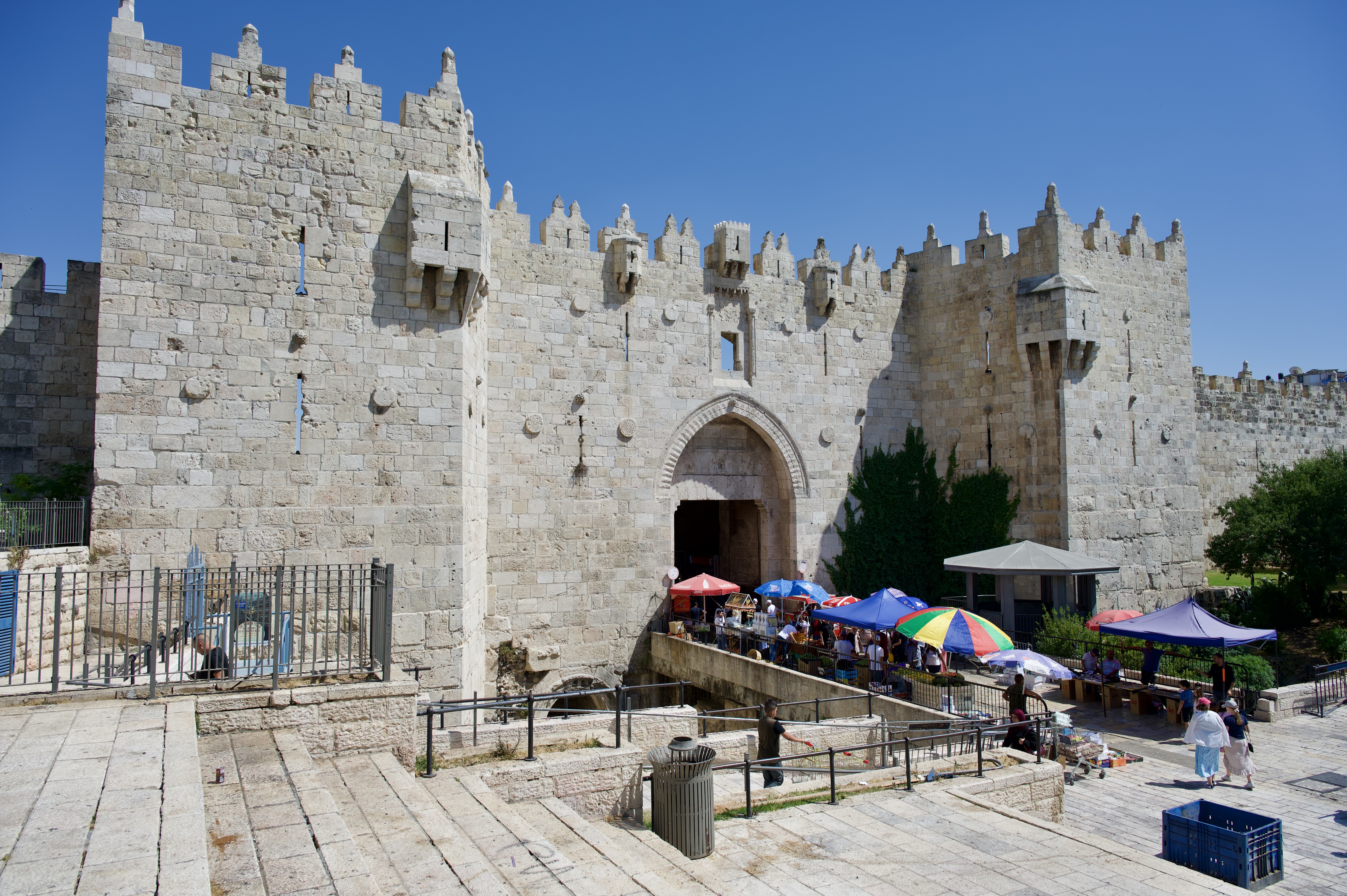
Outside the Gate, Ami pointed that this is one of the main entrances to the Old City of Jerusalem. It is located city’s northwest side and connects to a highway leading out to Shechem and from there to the Damascus.

Beneath the current gate, and to the left, there are the remains of an earlier gate dating back to the time of the Roman Emperor Hadrian, who visited the region in 130–131 AD. From the Damascus Gate, we took a short walk to the Garden Tomb.
The Garden Tomb
Our final stop today was at the Garden Tomb. After the craziness of the Muslim Quarter, it was nice to spend a few minutes in this peaceful place.
On this site in the late 1800s was discovered a tomb from the time of Jesus. The site was established due to doubts about whether the tomb under the Church of the Holy Sepulchre was the true burial place of Christ since it was inside the city walls. However, it was determined later that the location of the Church of the Holy Sepulchre would have been outside the walls of Jerusalem as they stood in the time of Jesus.

A local guide named Philip took over and led us through the site. He said that he was born and raised in Jerusalem (His English was flawless), and that he was not there to try and convince us that this is the actual tomb of Jesus. He said that whether it is the actual tomb of Jesus it is a great visual aid for understanding the biblical account of the burial and resurrection (Matt 27:57-28:10; Mark 15:42-16:8; Luke 23:50-24:12; John 19:38-20:10), because this tomb has features that line up with description in scripture.

He led us through to the place and showed us the rock that was identified as Golgotha, because it vaguely resembles a skull.
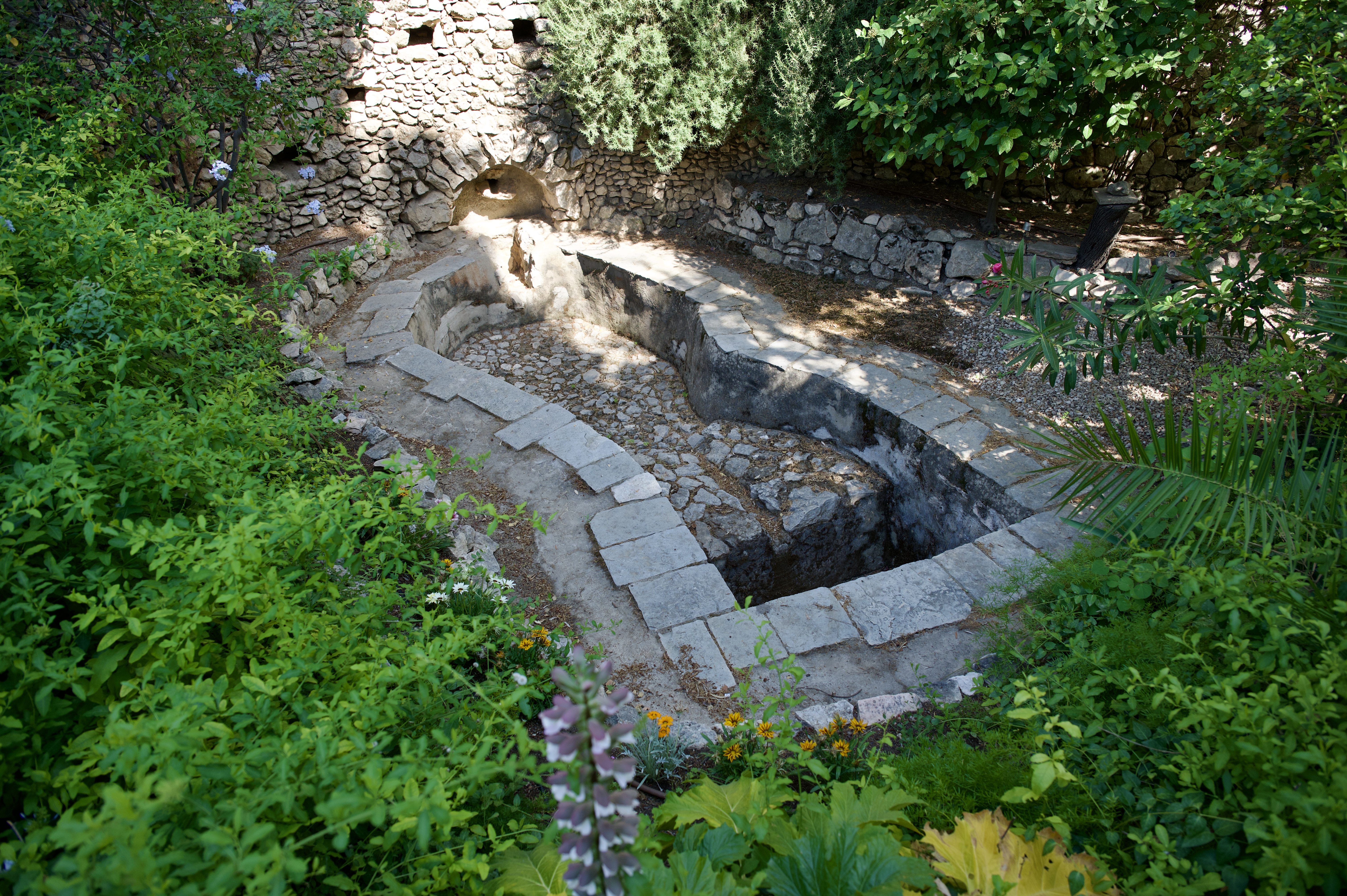
He took us to the garden, and explained that they believe that a garden was in the location even back in ancient times. The apostle John identified that the tomb of Jesus was near a garden. He said that in antiquity a garden did not mean flowers, but instead an agriculture garden. They have found the lower part (vat) of an ancient winepress just beside the tomb, so they know it was a garden.

Finally, we came to the tomb. As we were waiting to enter, I asked Philip some questions about the tomb, specifically about the cross that is pained on the inside (I saw this in 2020), and what changes were made to the site by the crusaders. He said that the Byzantines had turned this site into a church in the 5th century AD, and that they had painted the cross on the tomb. In the time of the crusades, they converted the whole area into a donkey pen. The door to the tomb was enlarged to allow the donkeys to enter, and the channel in front where the stone would have been was enlarged to make a feeding trough. I found this ironic, because they essentially turned the channel into a manger, which is where Jesus was placed when he was born. I found this all very interesting.

After waiting a few minutes, all four of us entered the tomb together, and talked a bit about what we were seeing. The tomb was built for three people, so there are three slabs inside.
After leaving the site, we took a short bus ride back to the hotel and then were able to rest and clean up before having a nice dinner in the main dining room. Tomorrow is the Pentecost holiday, so we will not be able to go into the Old City. Instead, we are planning on the Israel Museum, Herodium, and Bethlehem.
This has been a much better experience in Jerusalem than on my last trip. I think that last time I didn’t really know what to expect and found myself disappointed with all the “traditional” sites, and the over-the-top ornamentation. Now with experience I know what to expect, and our slower pace this time has allowed me to see around the traditional and appreciate those things that really do date back to Biblical times. I’m sure that having my family with me also makes a big difference.
